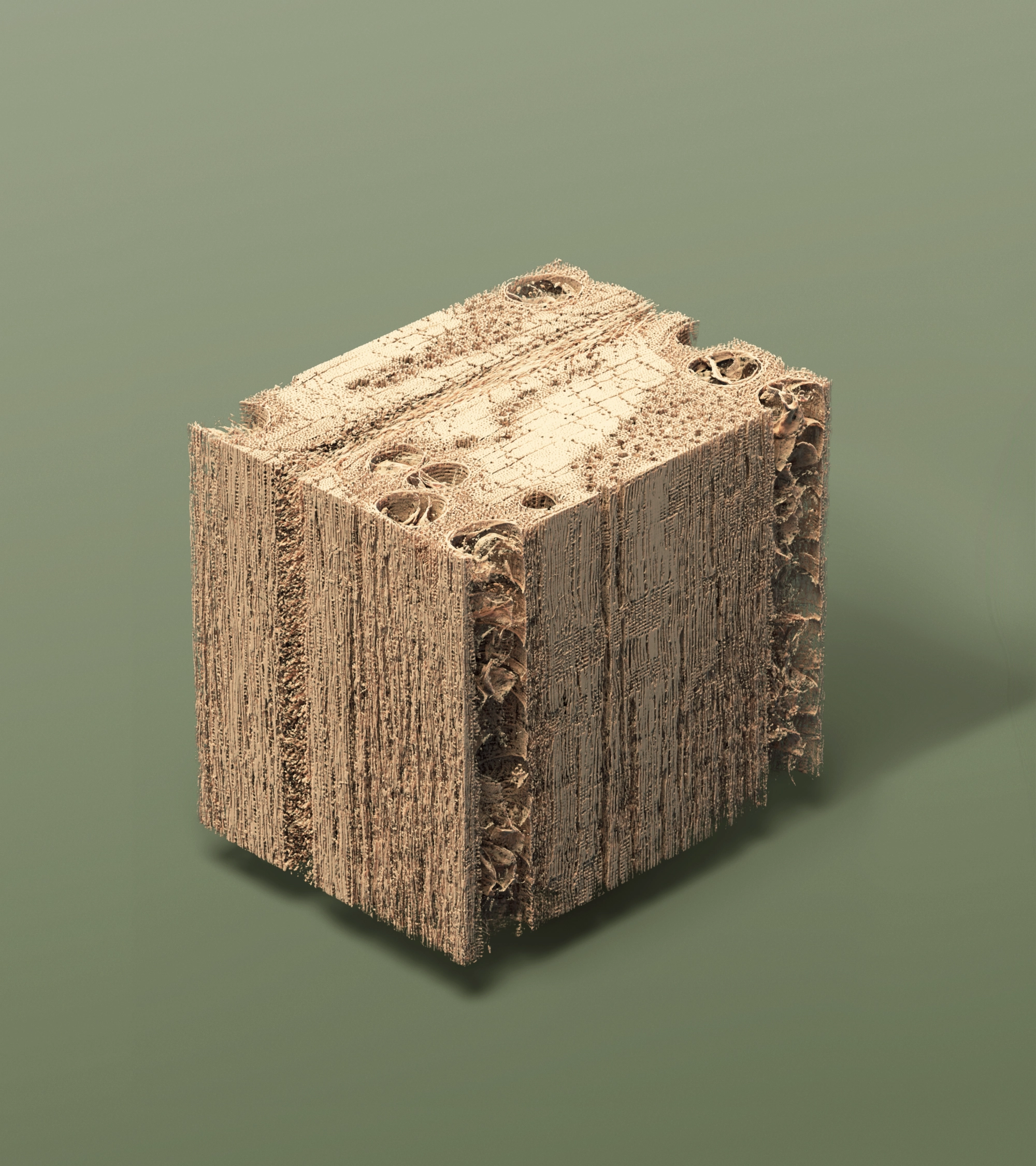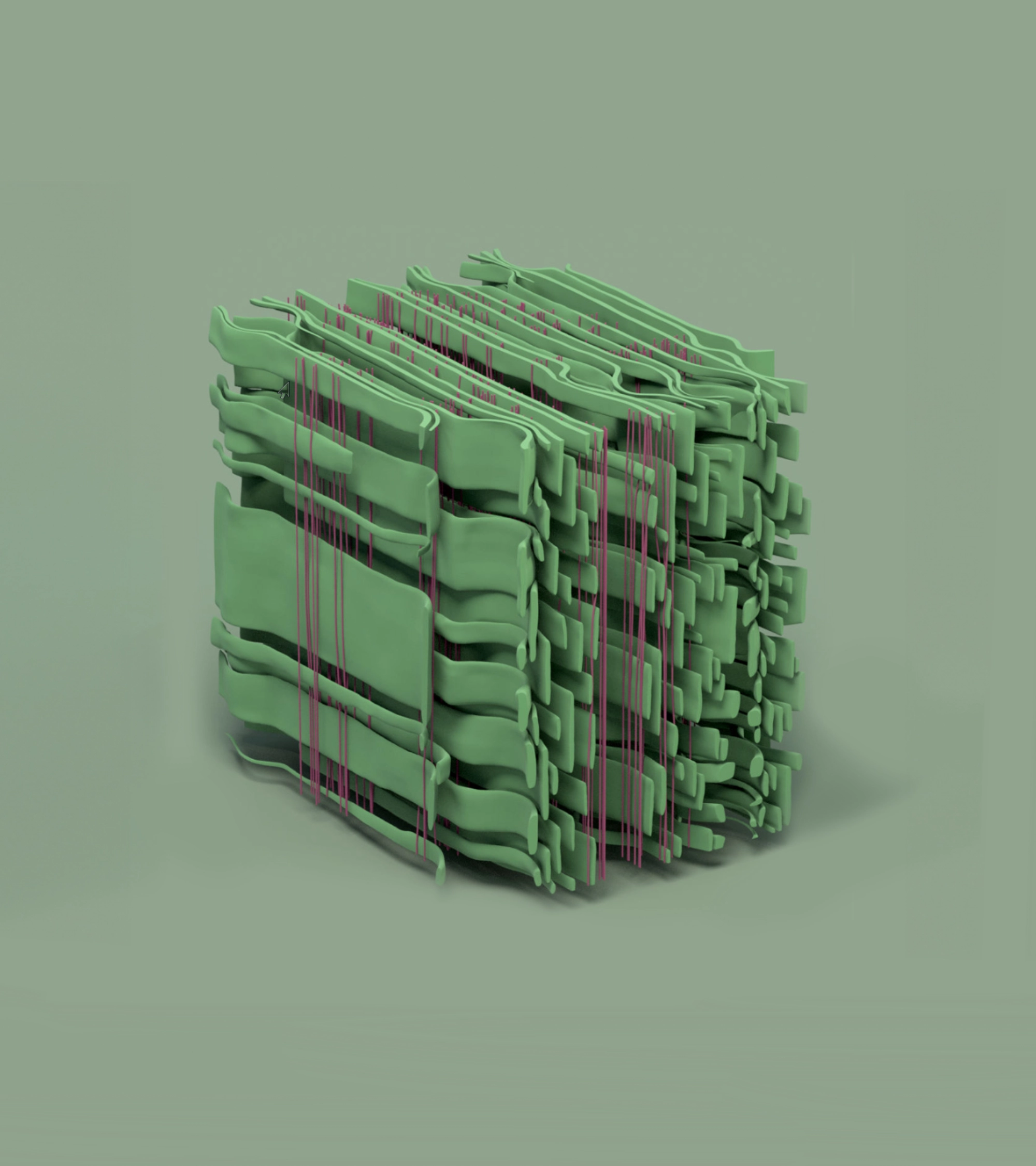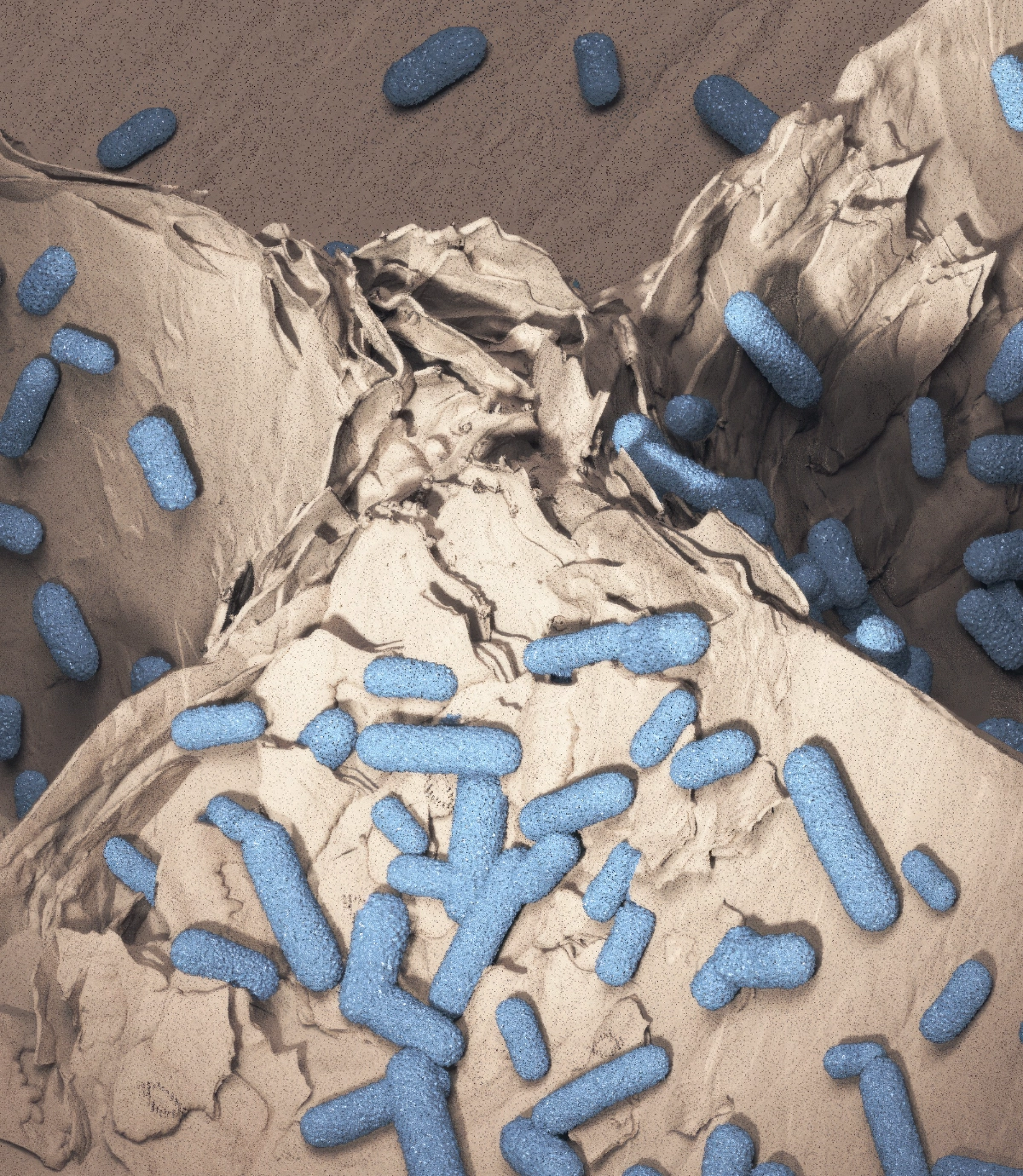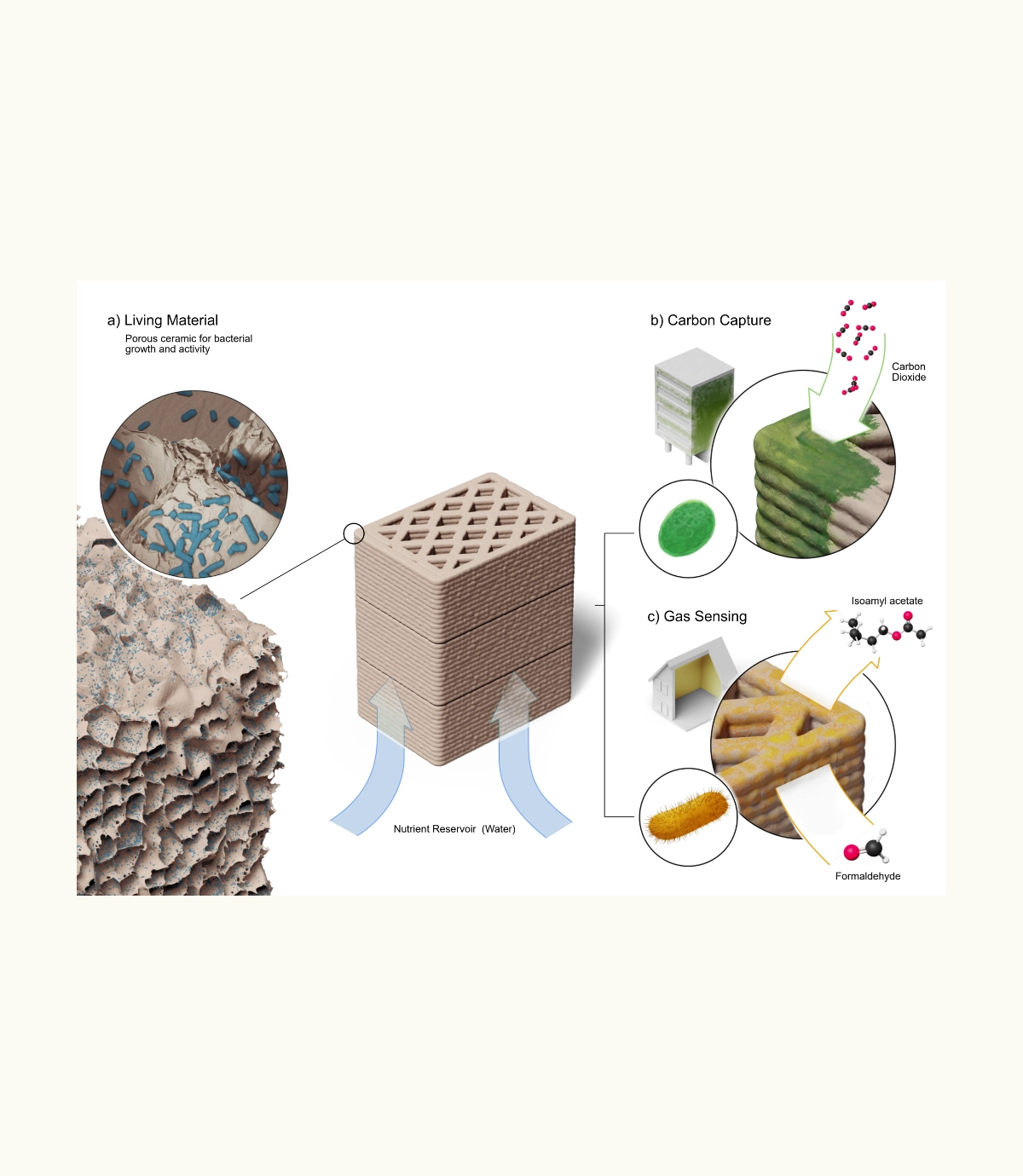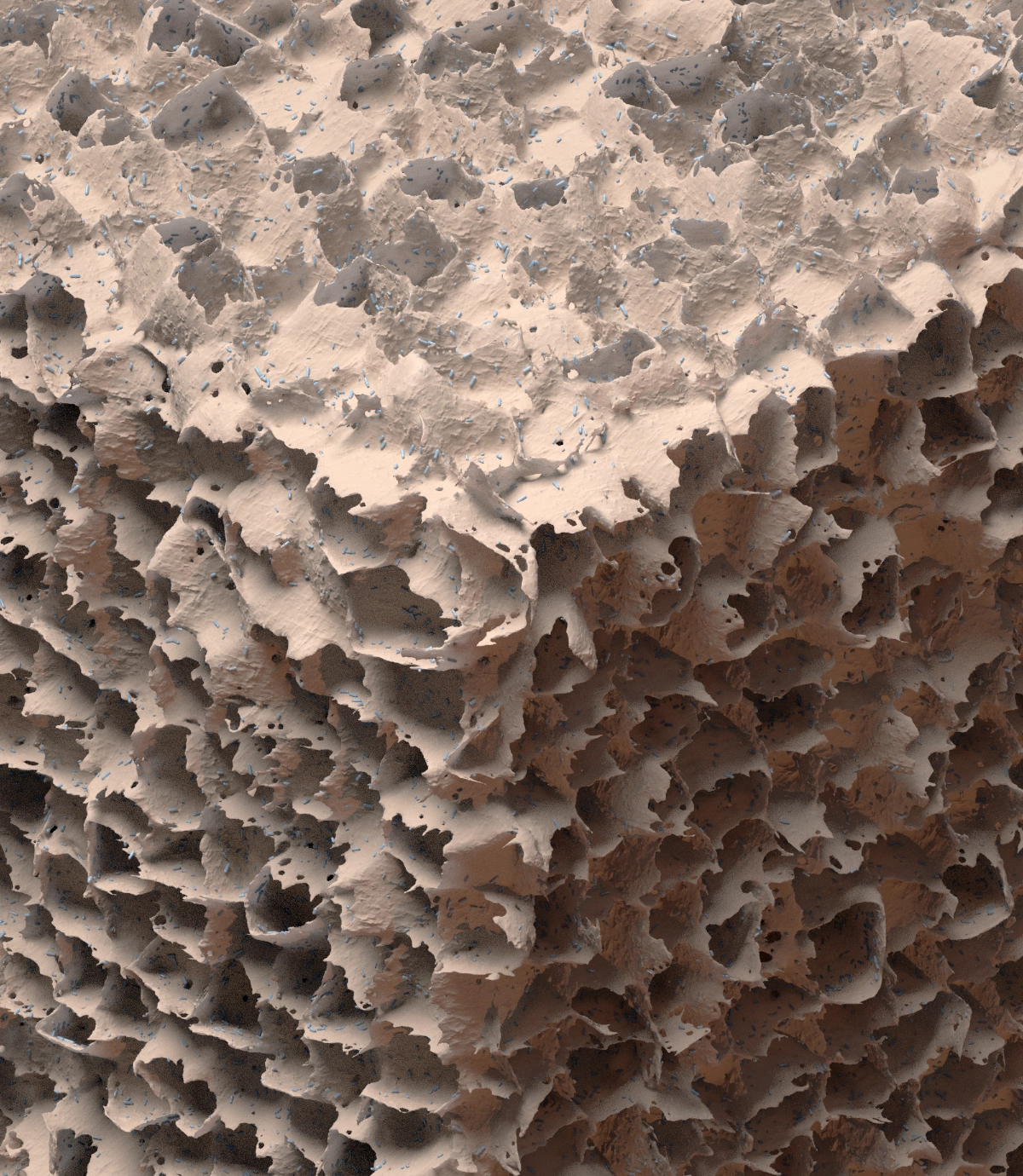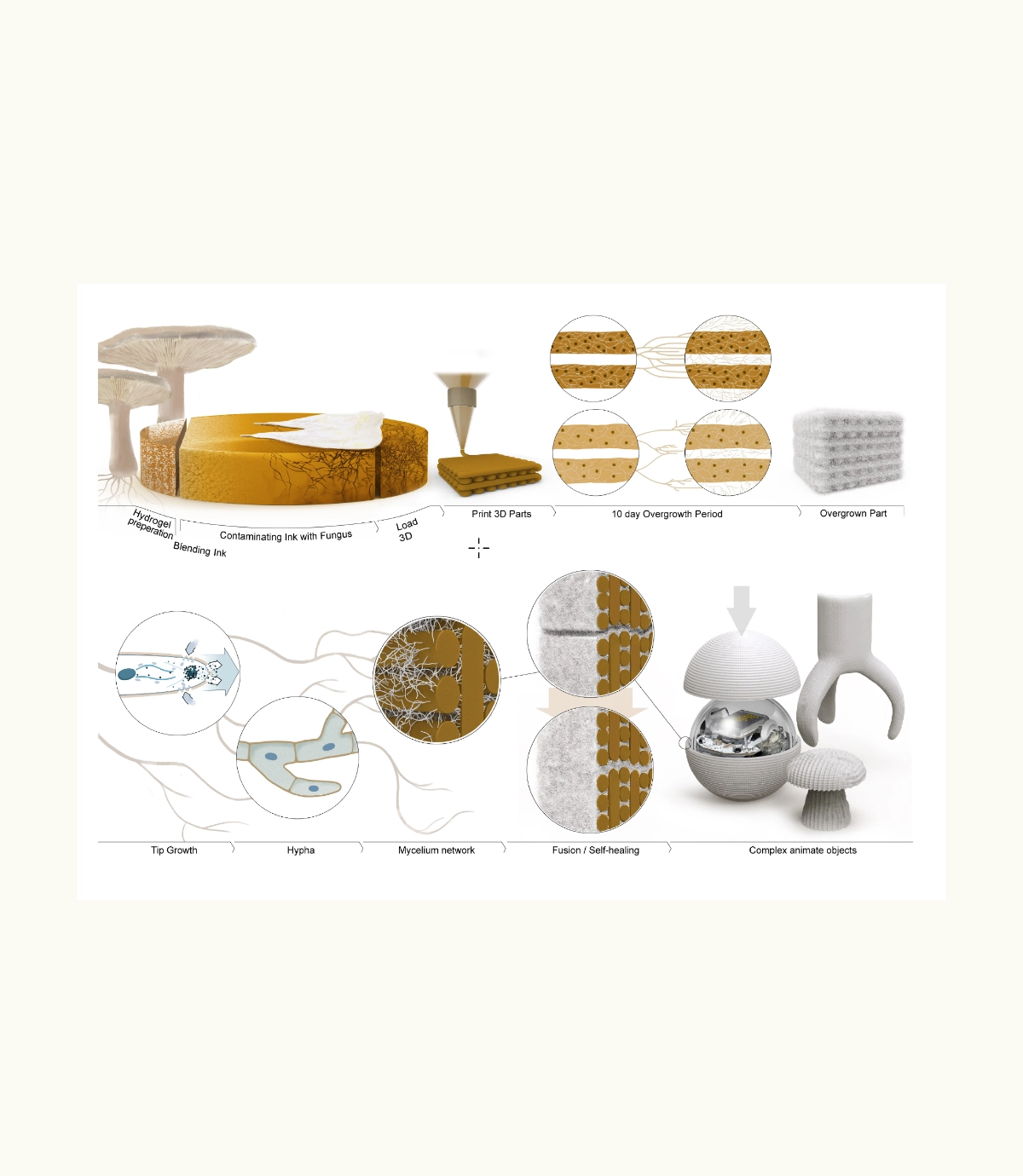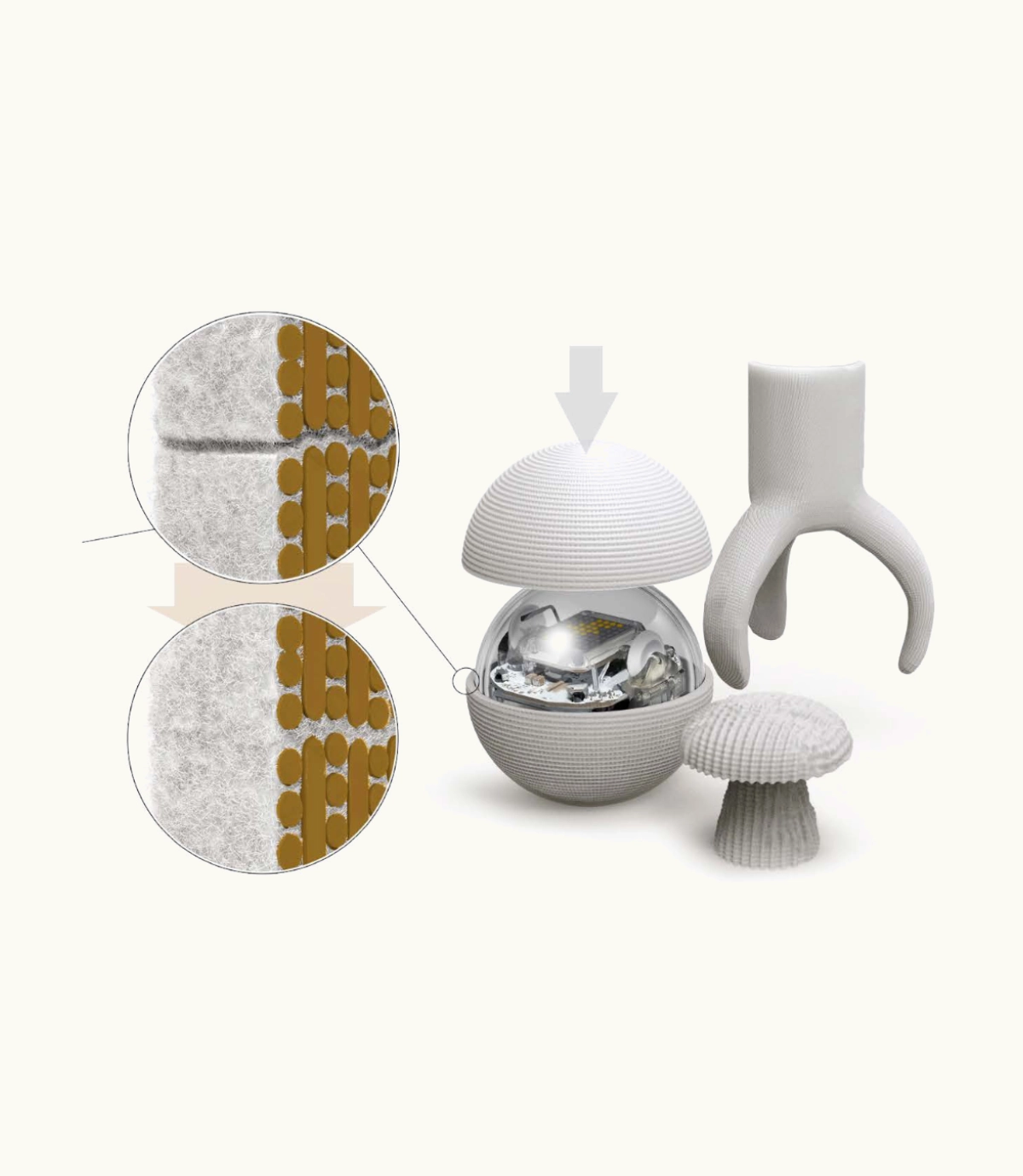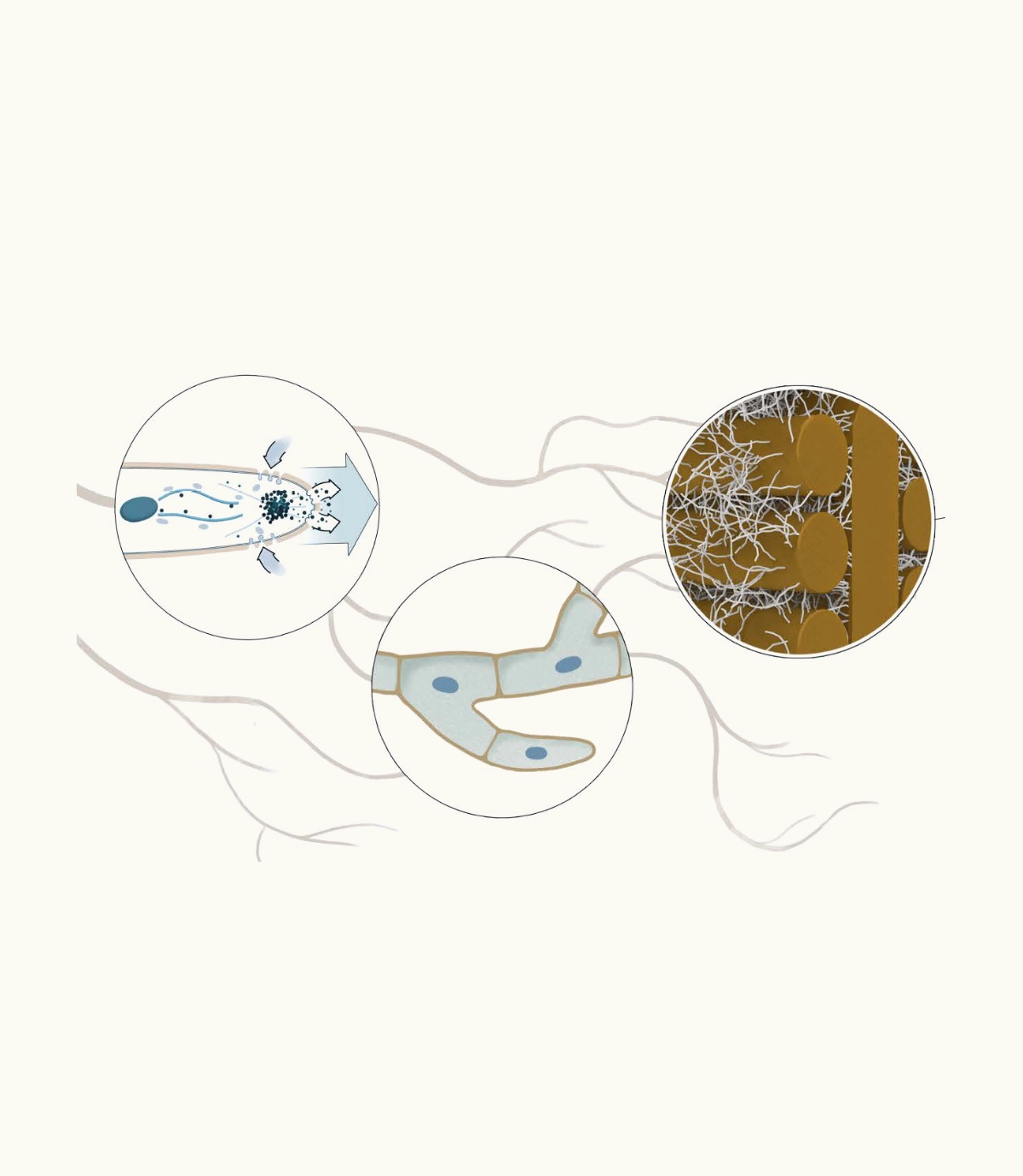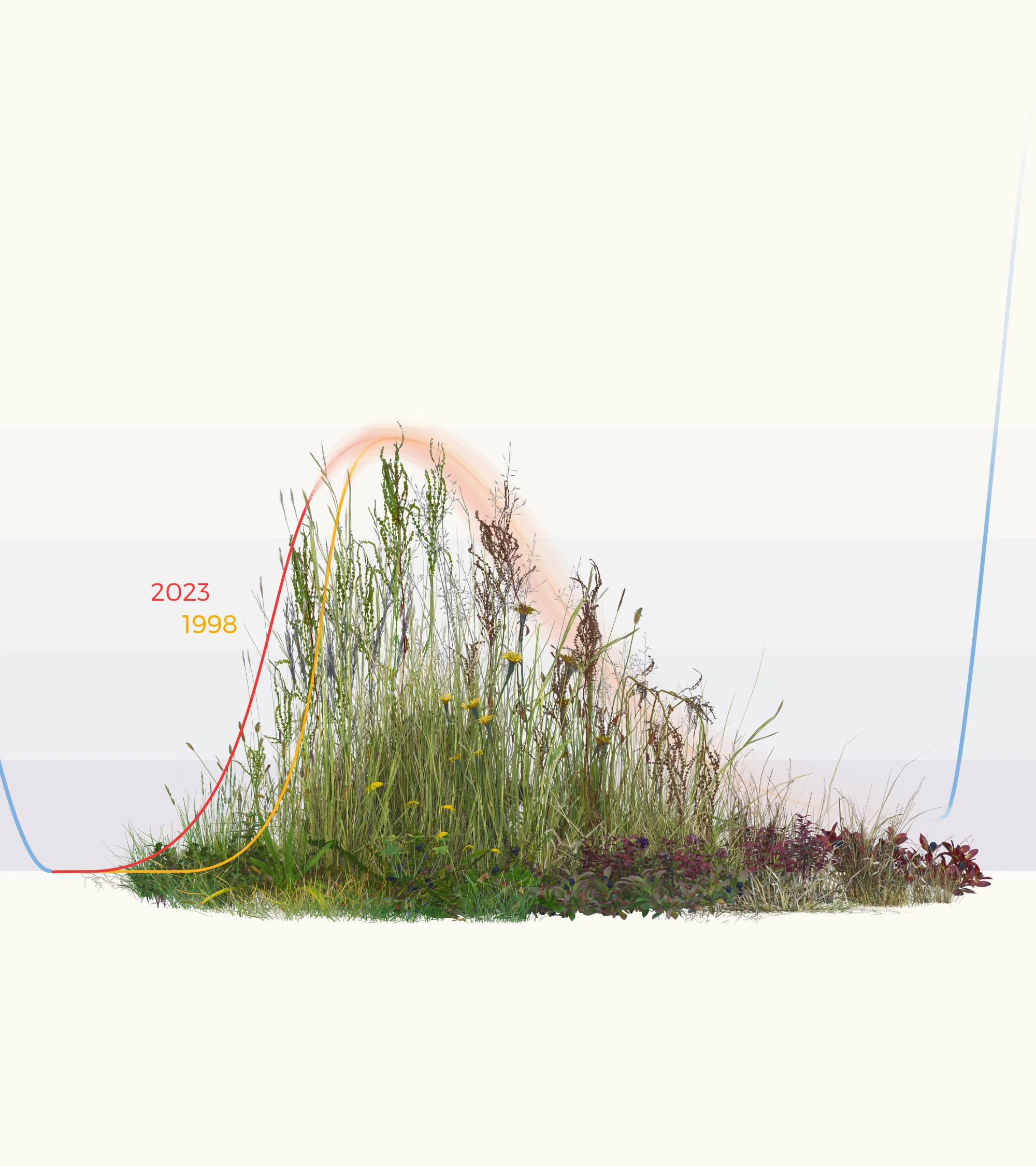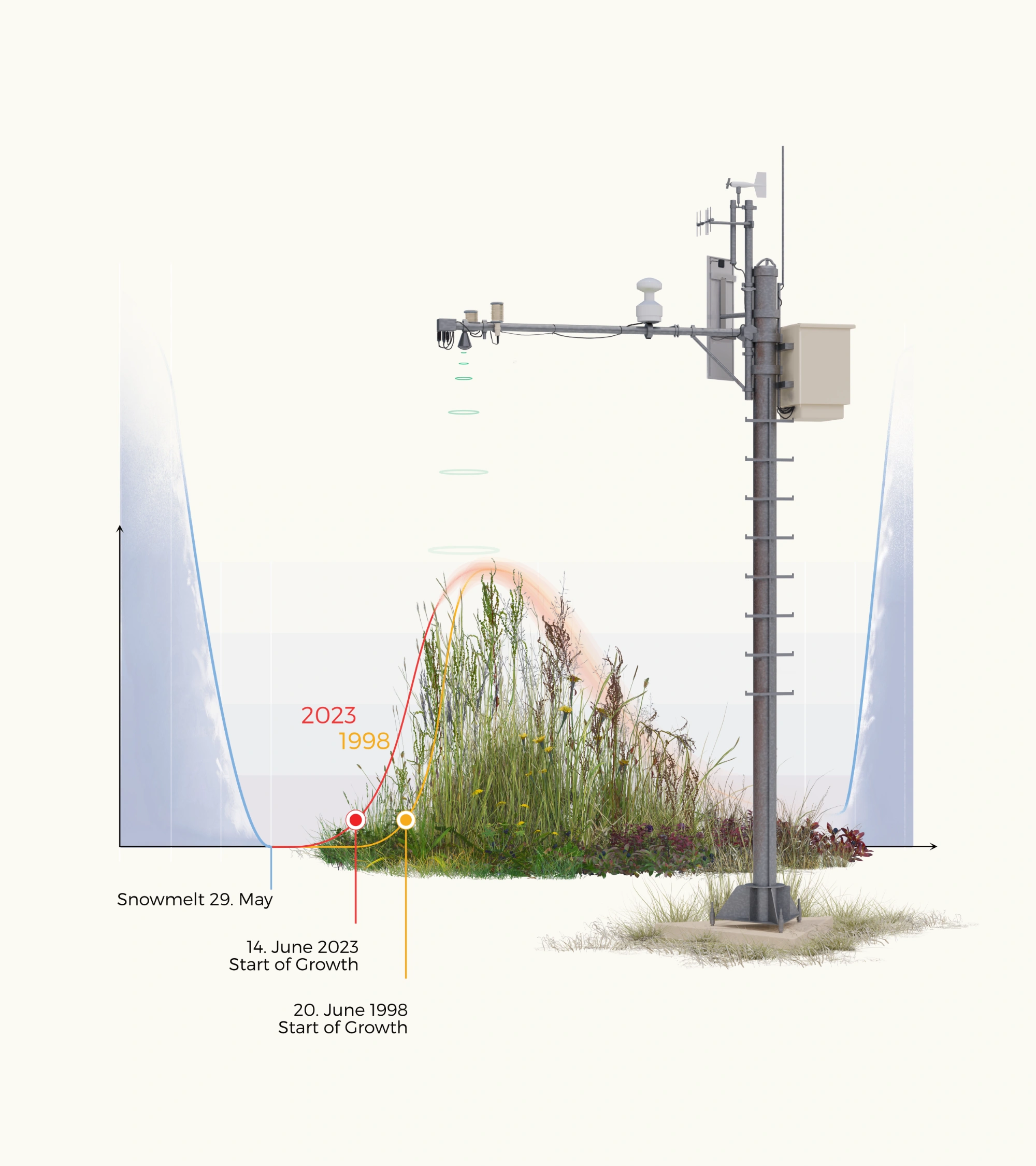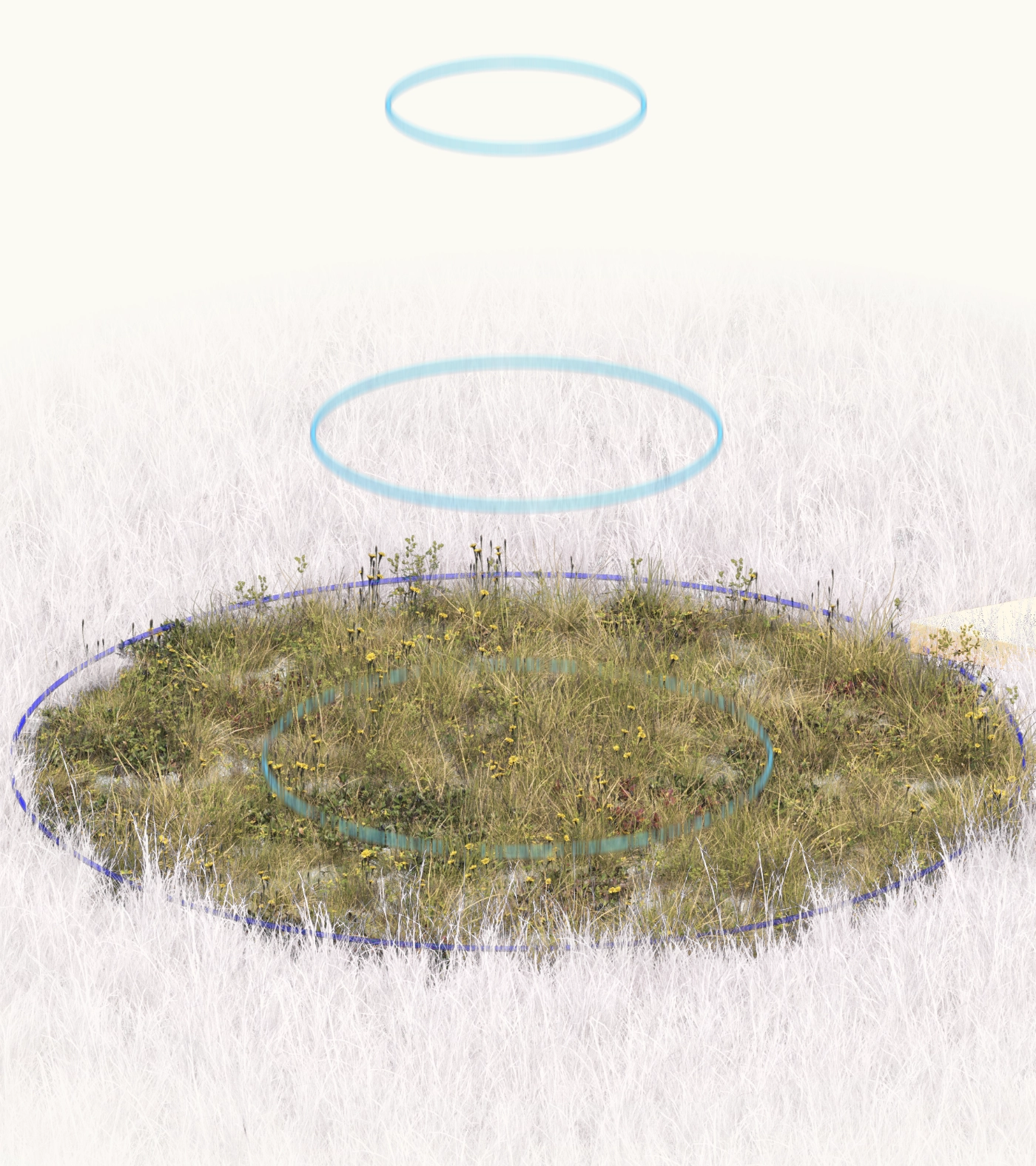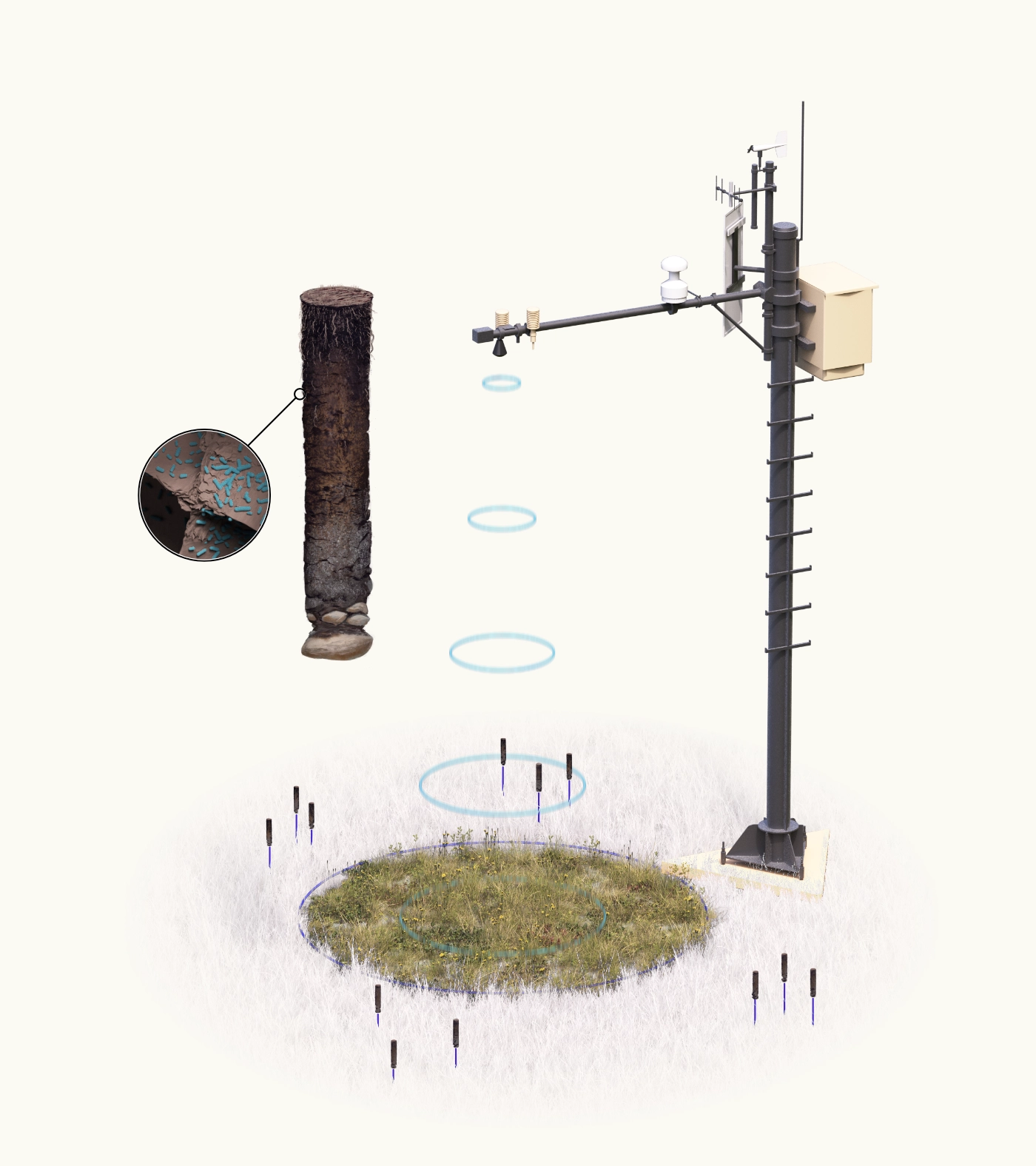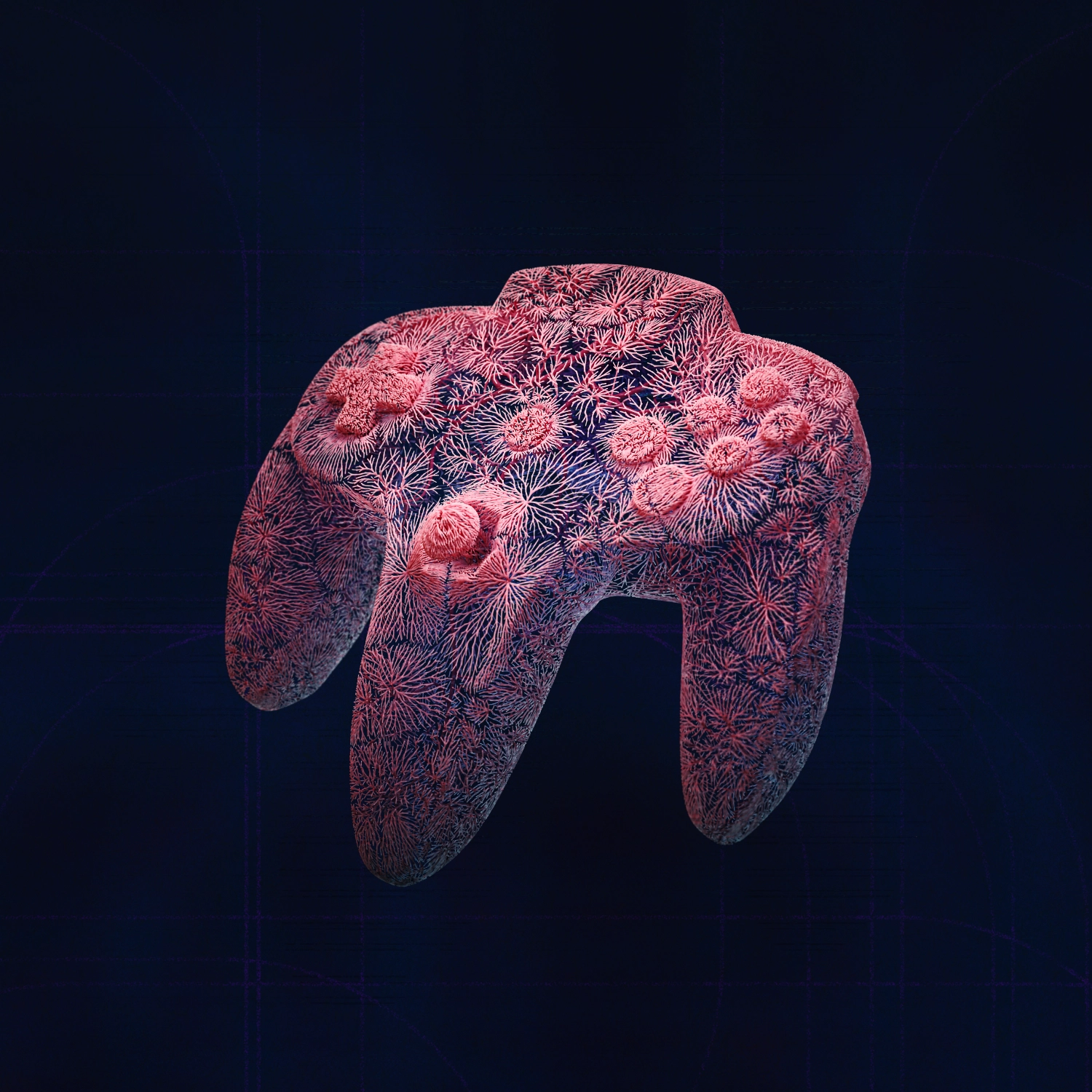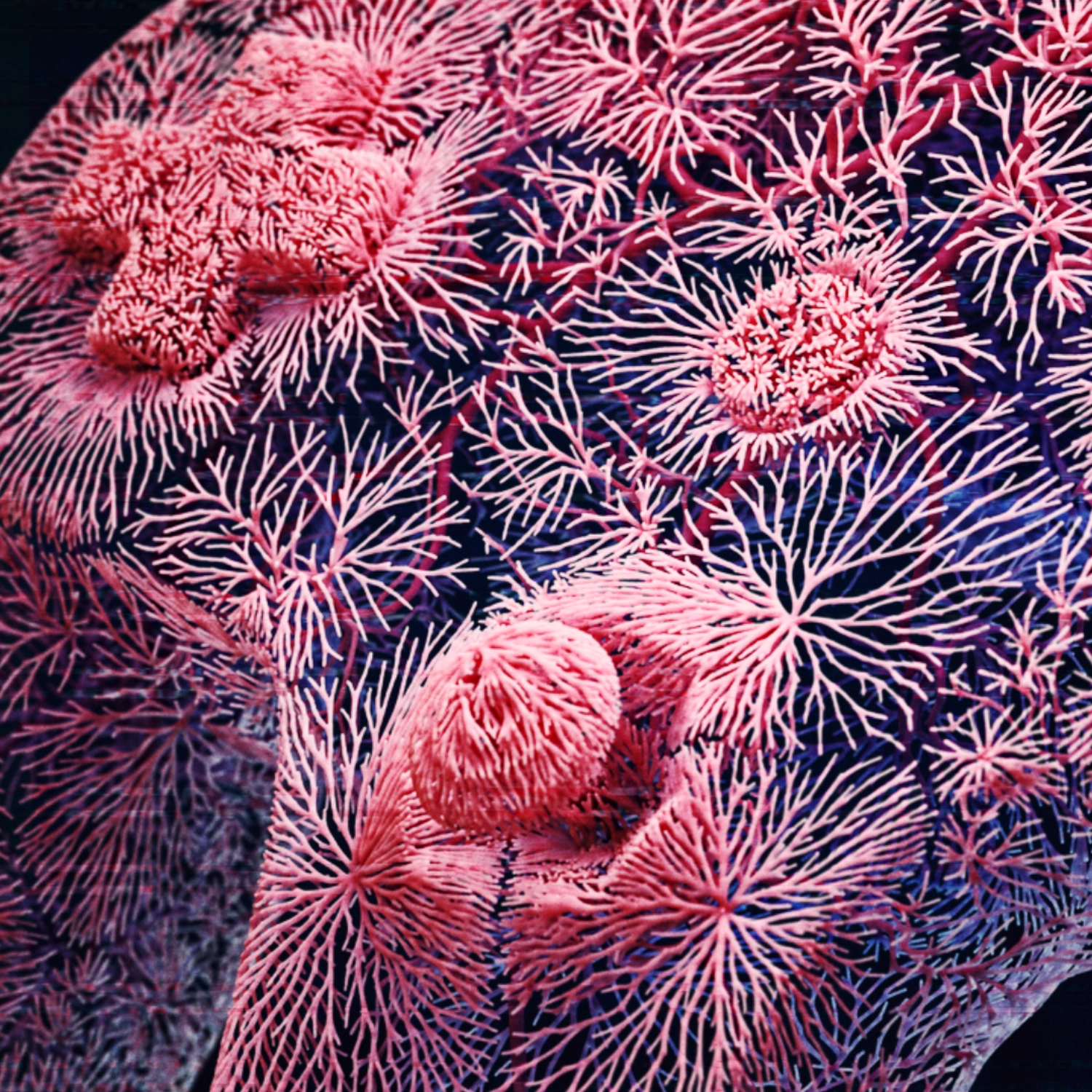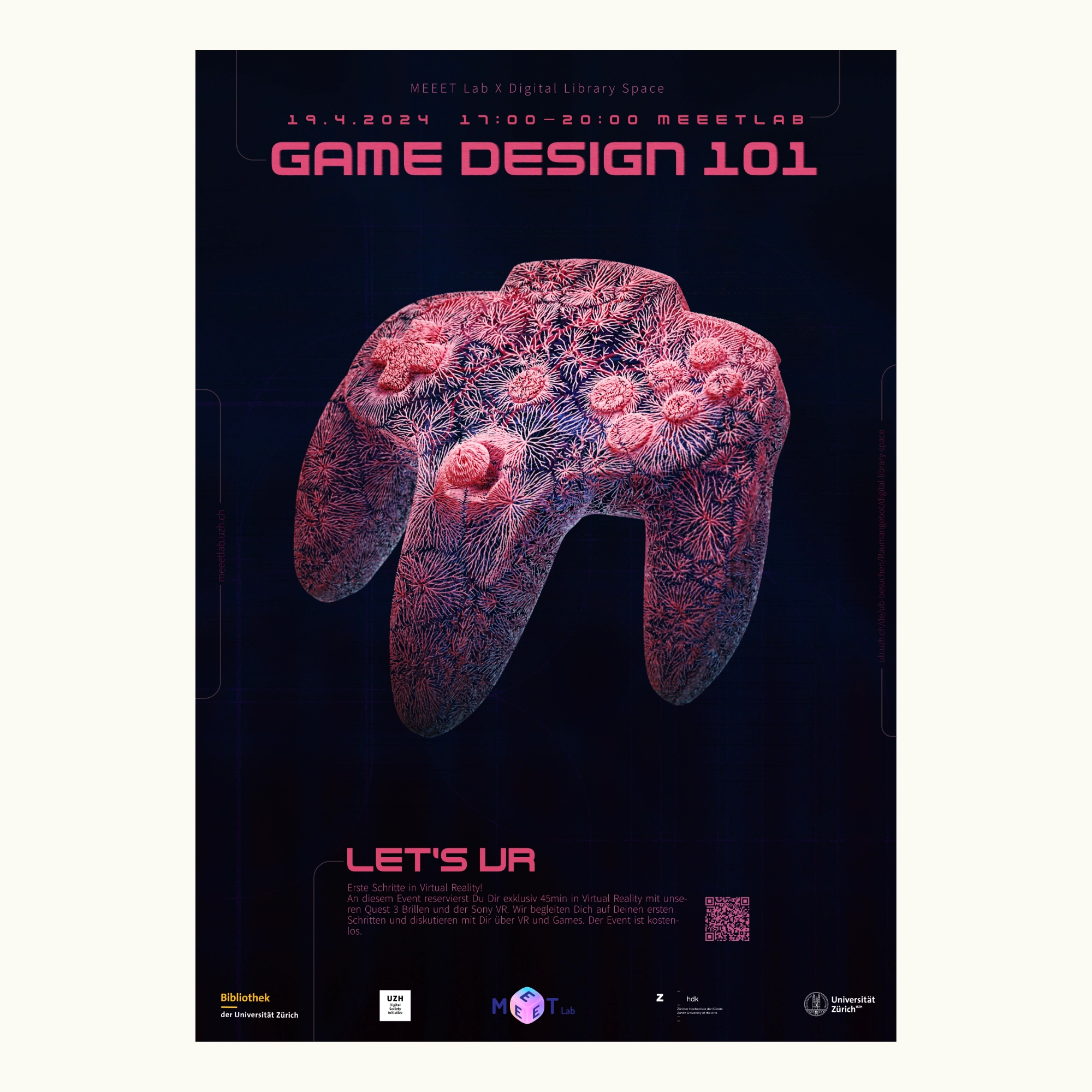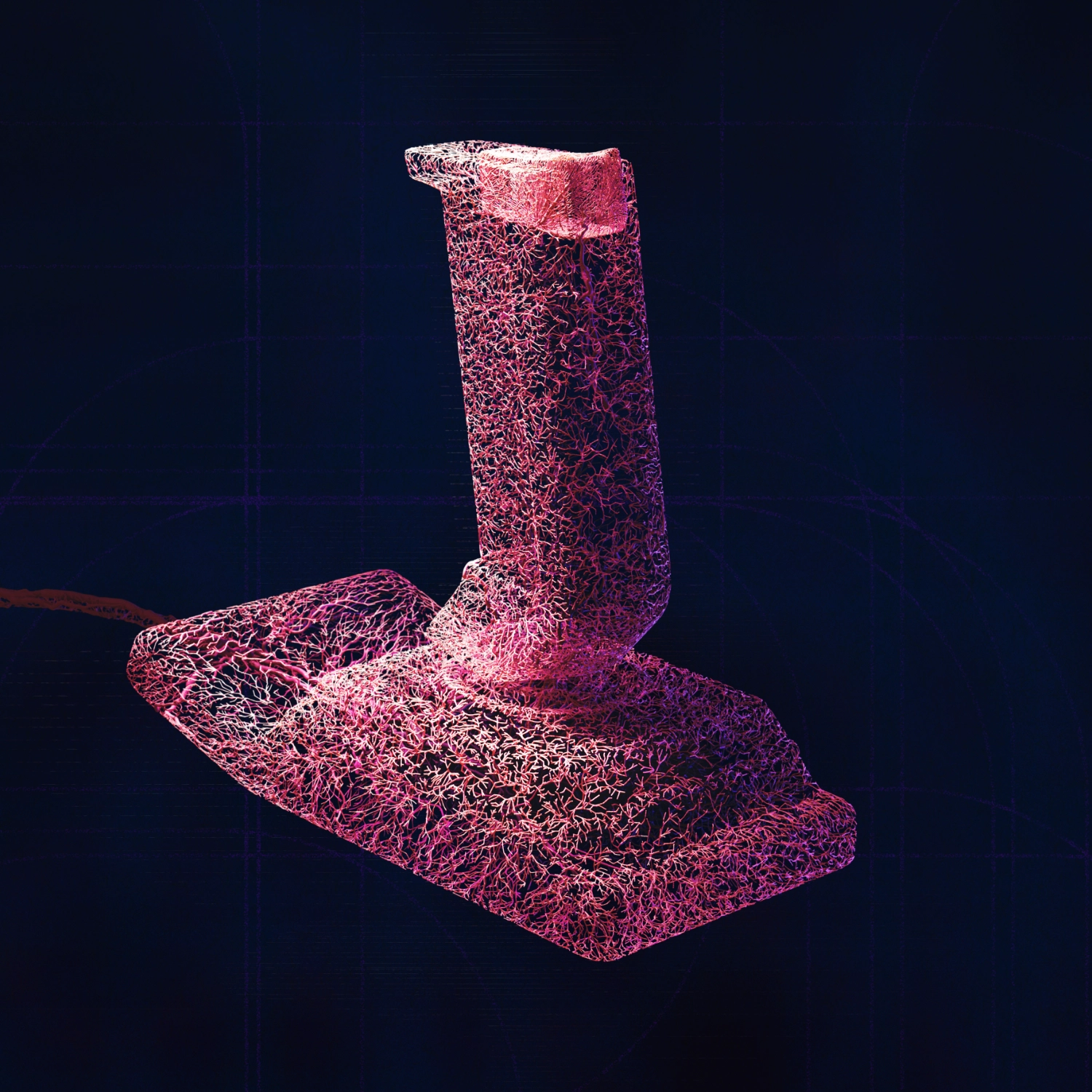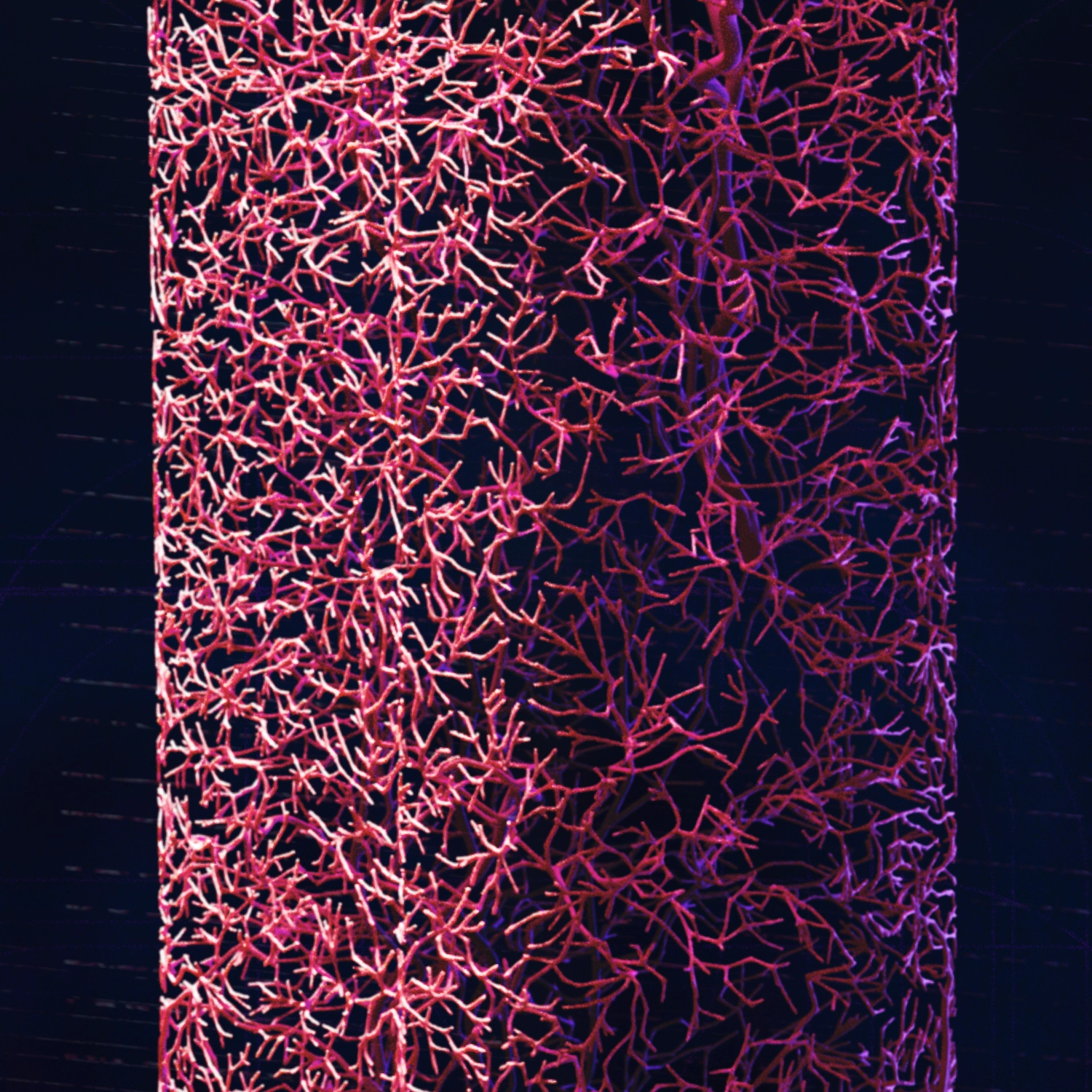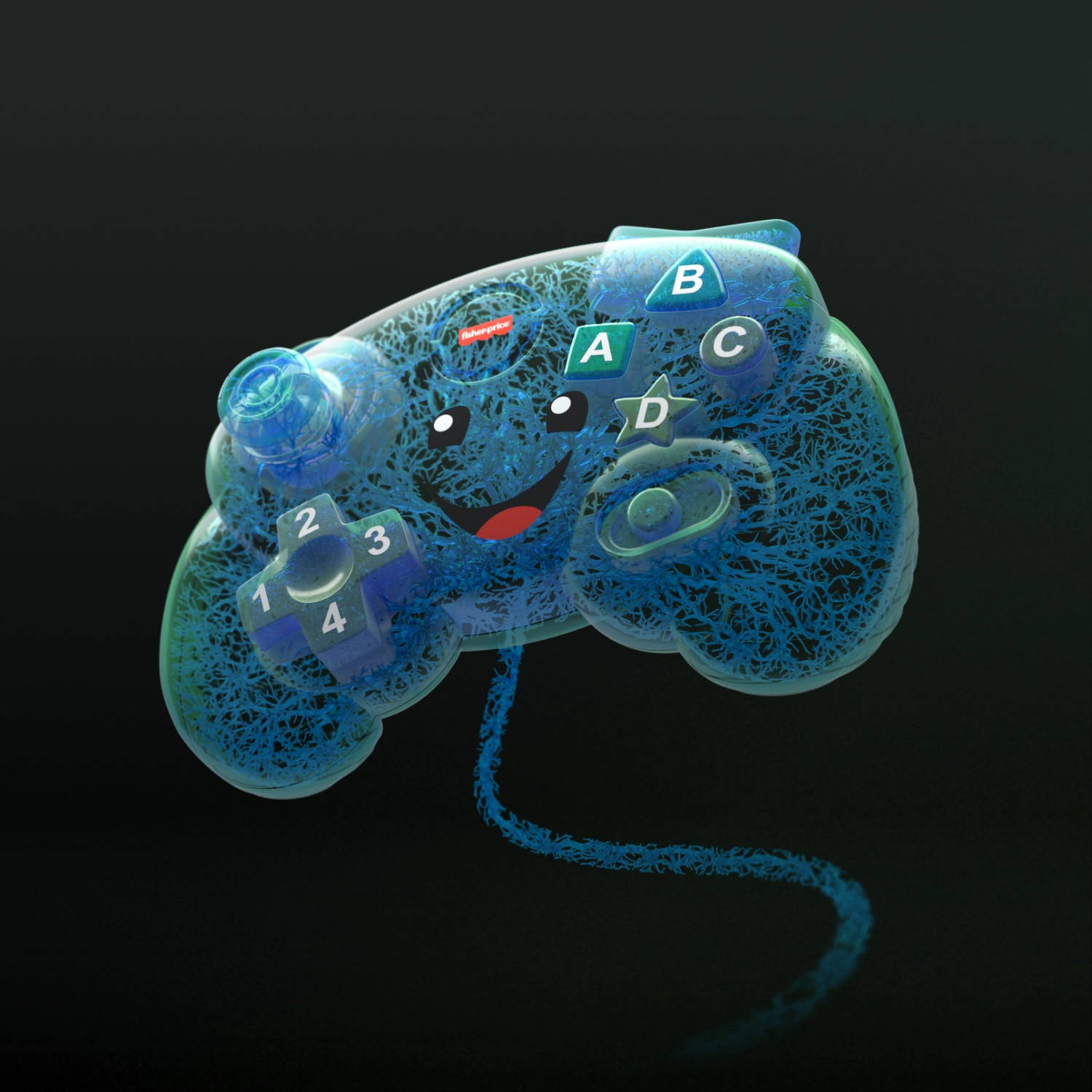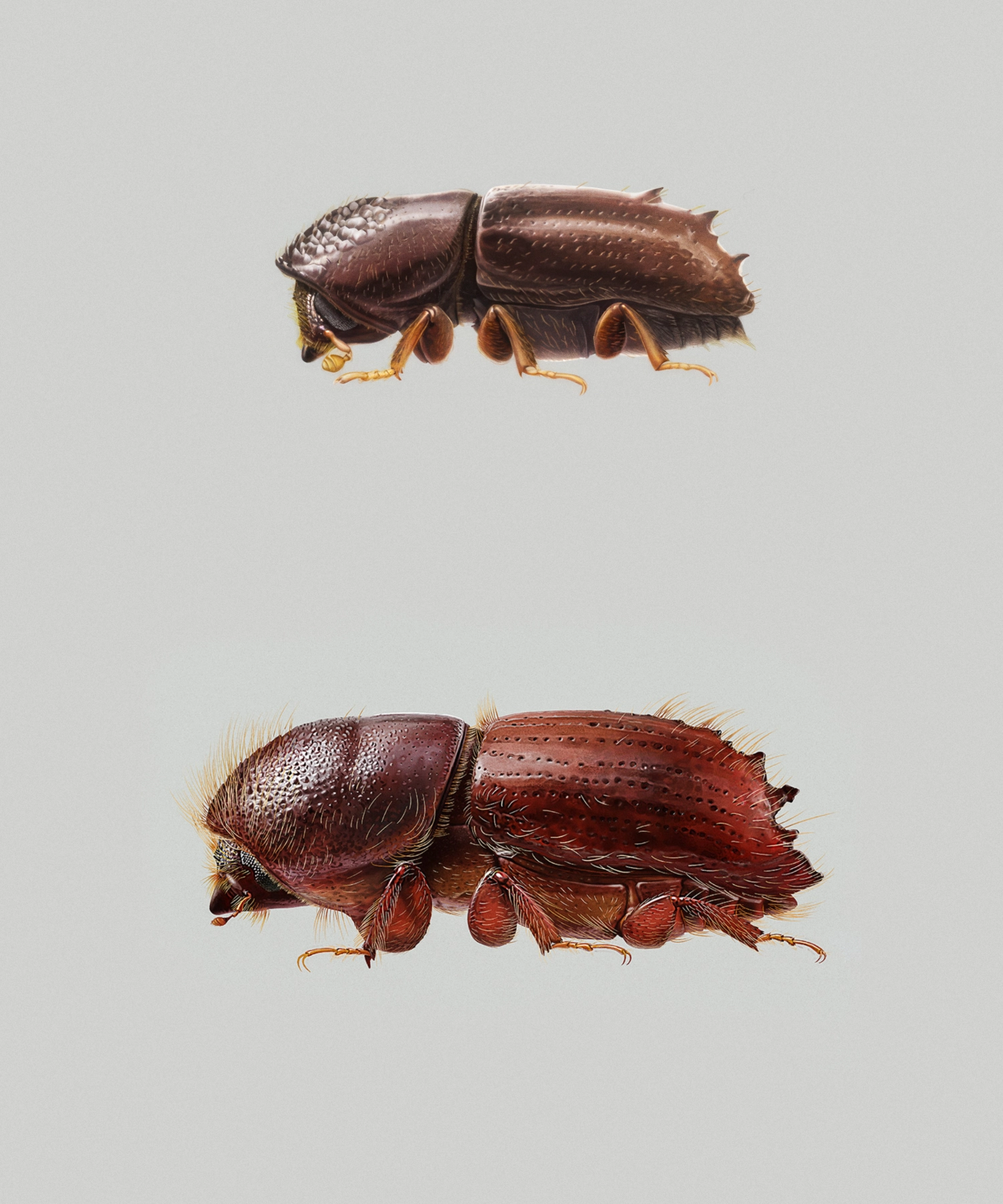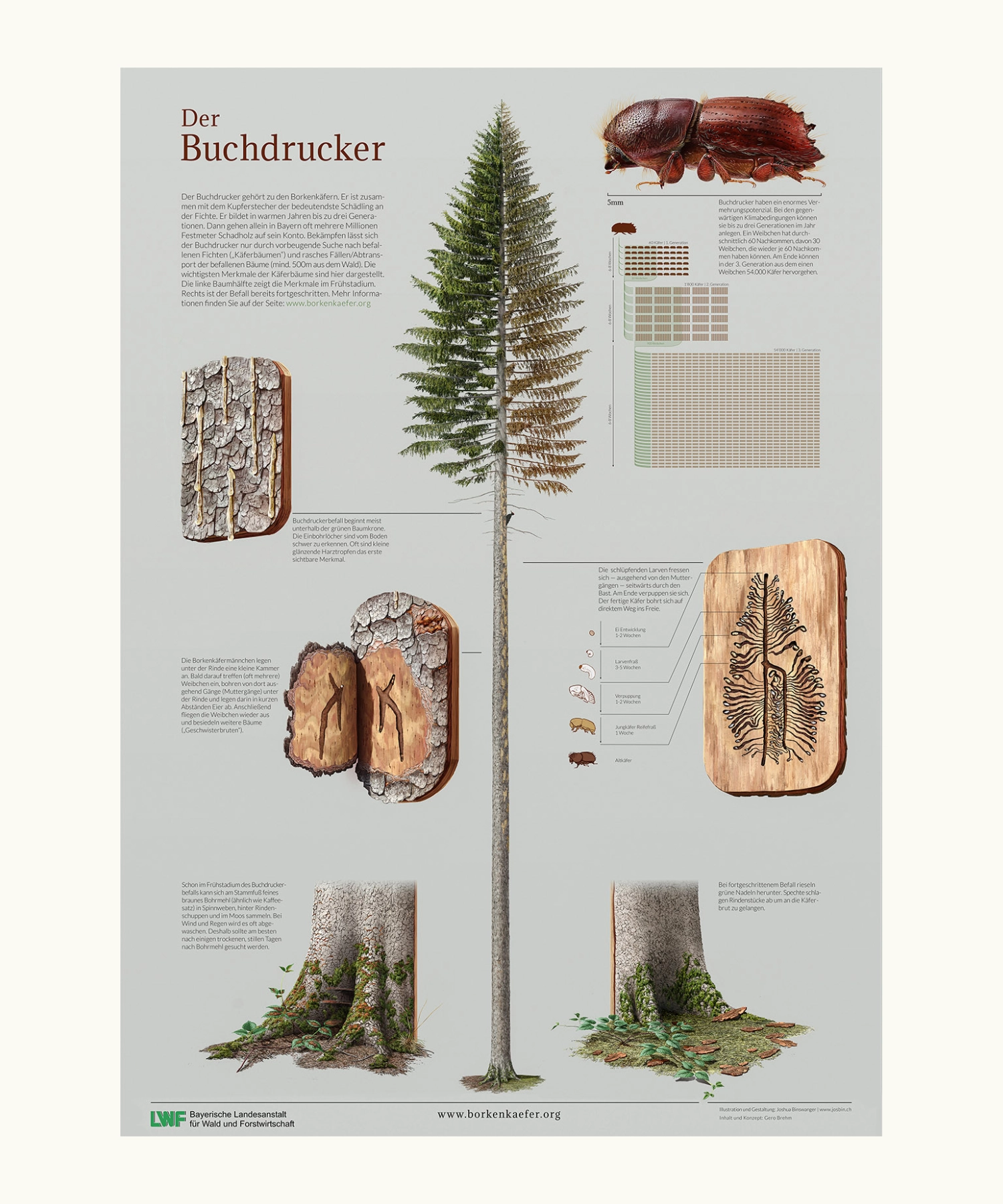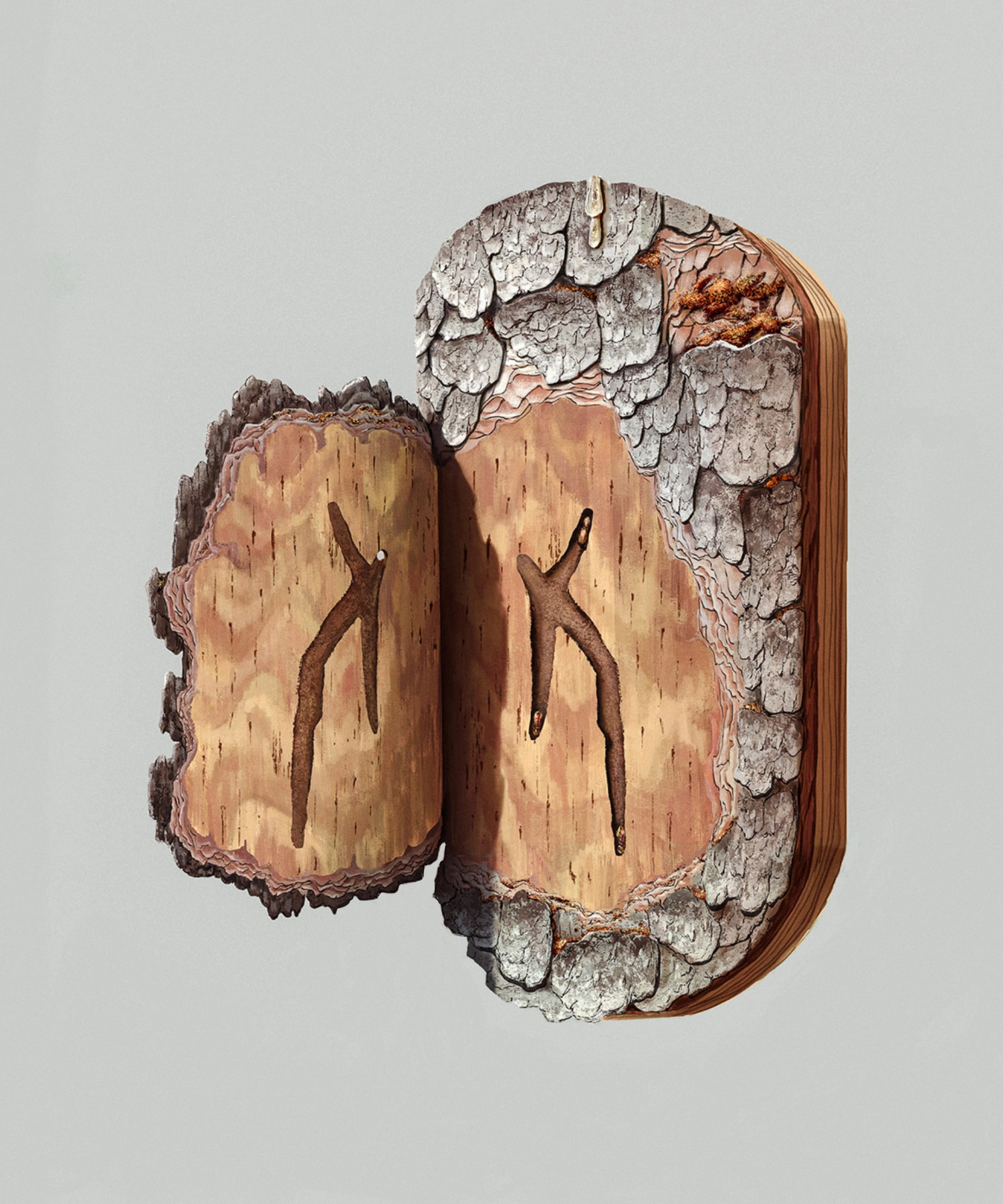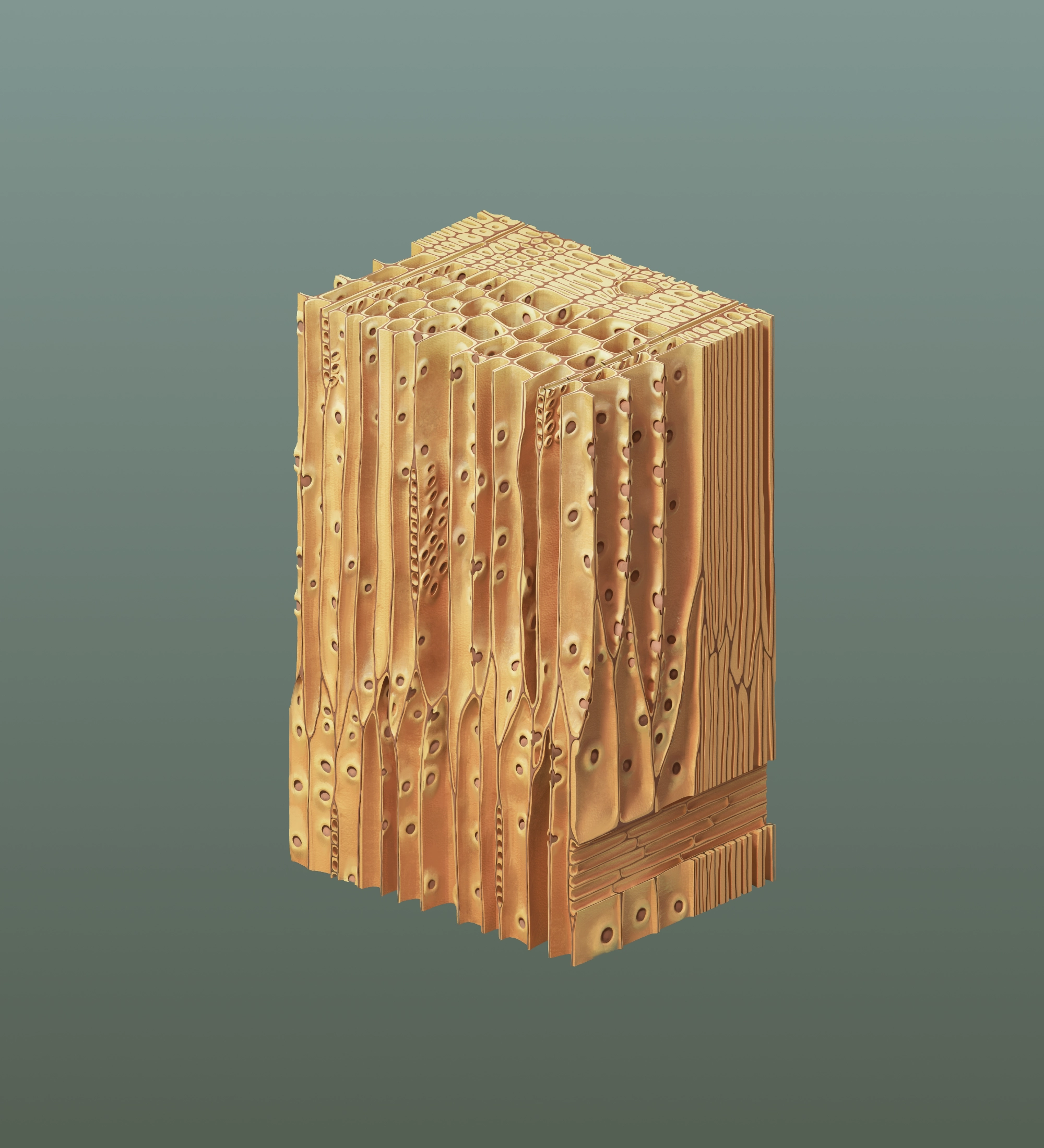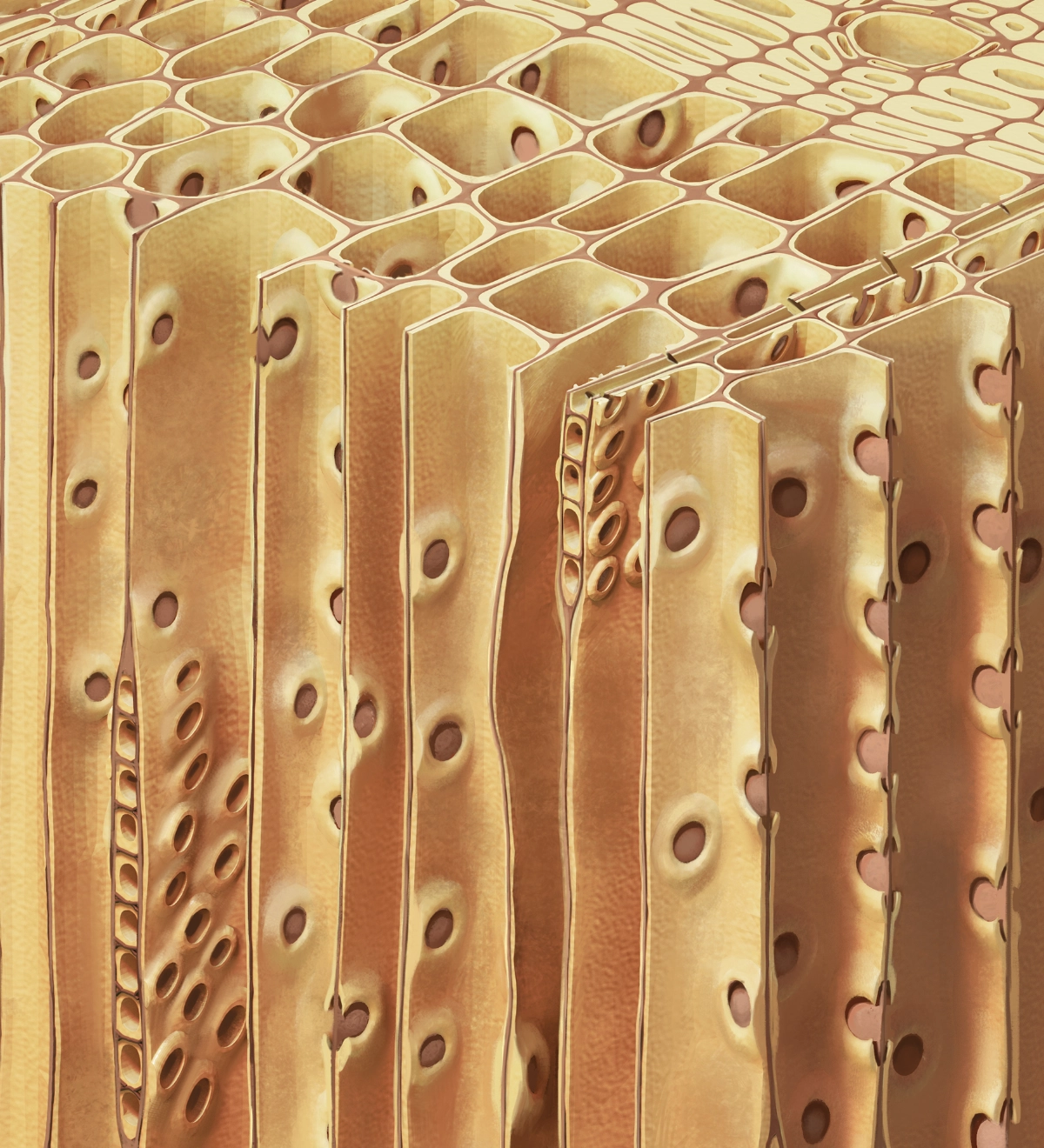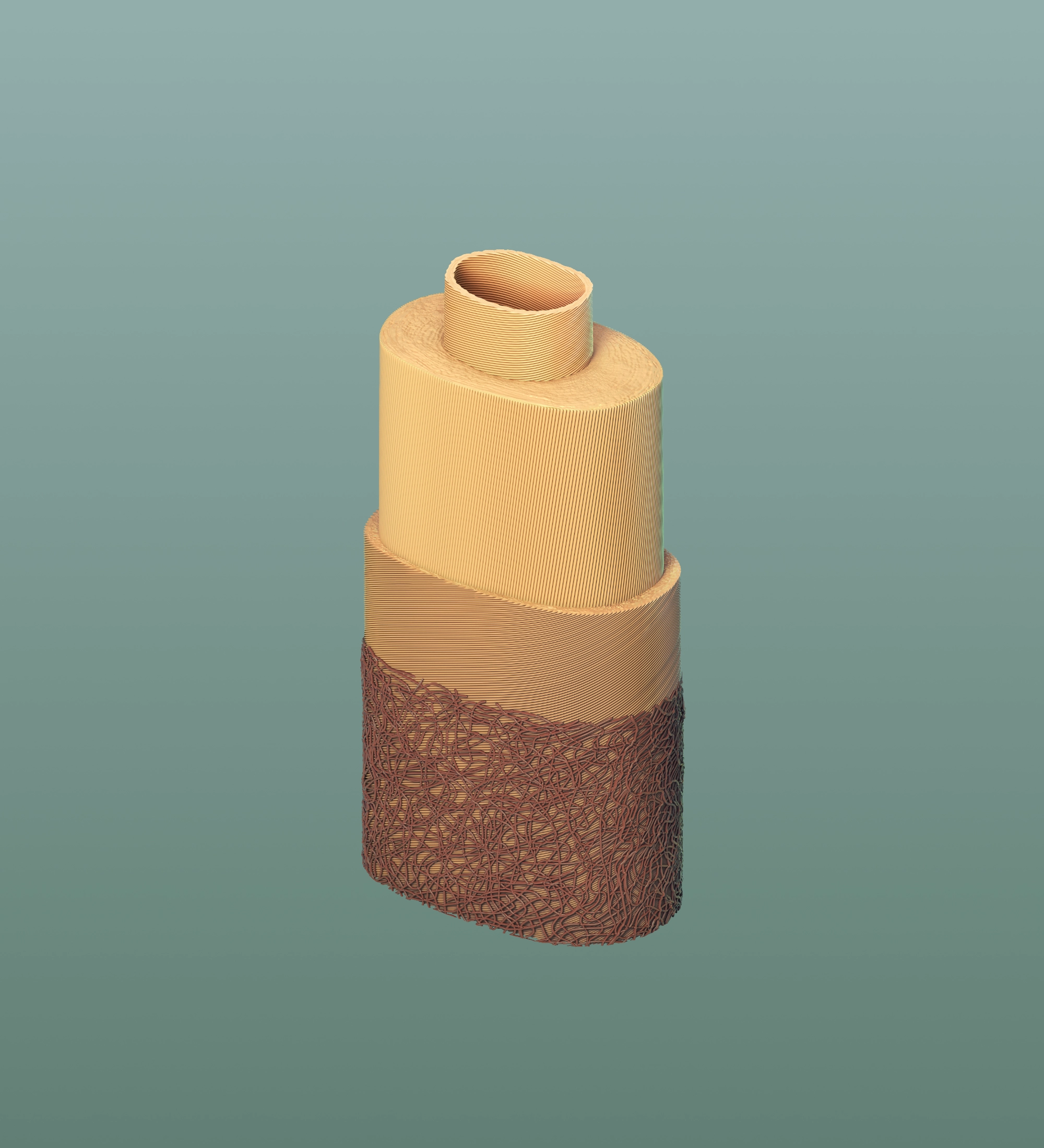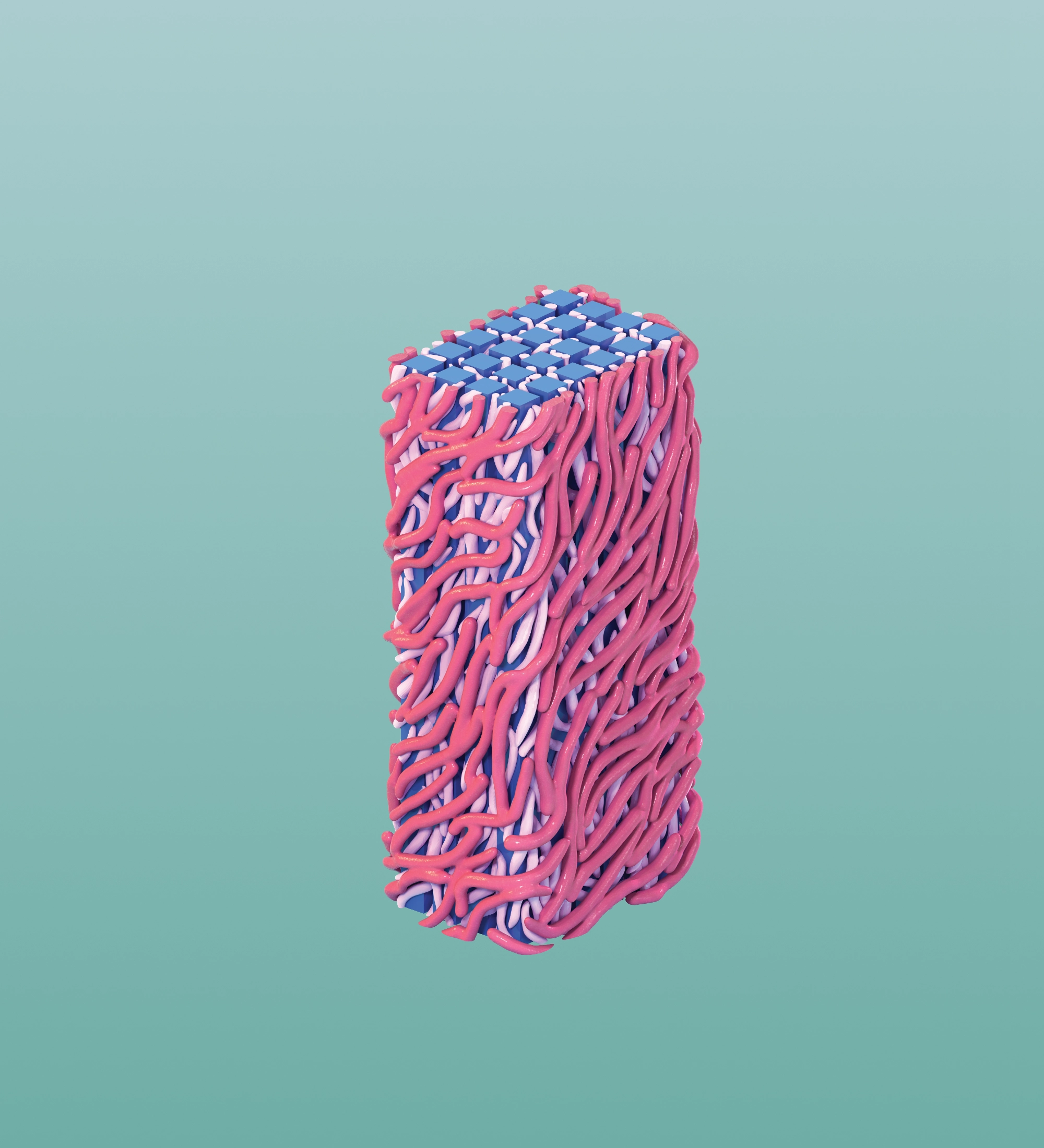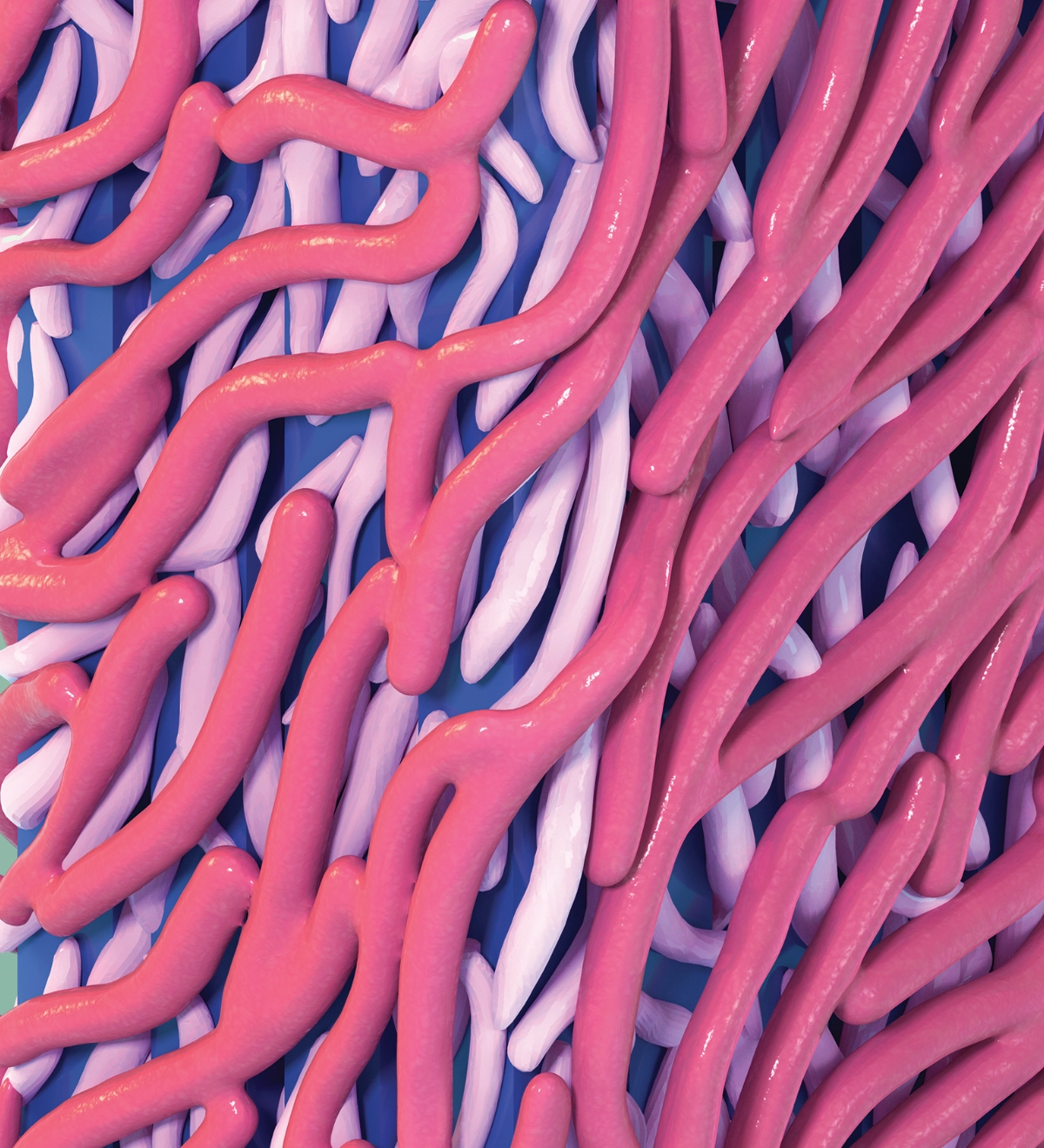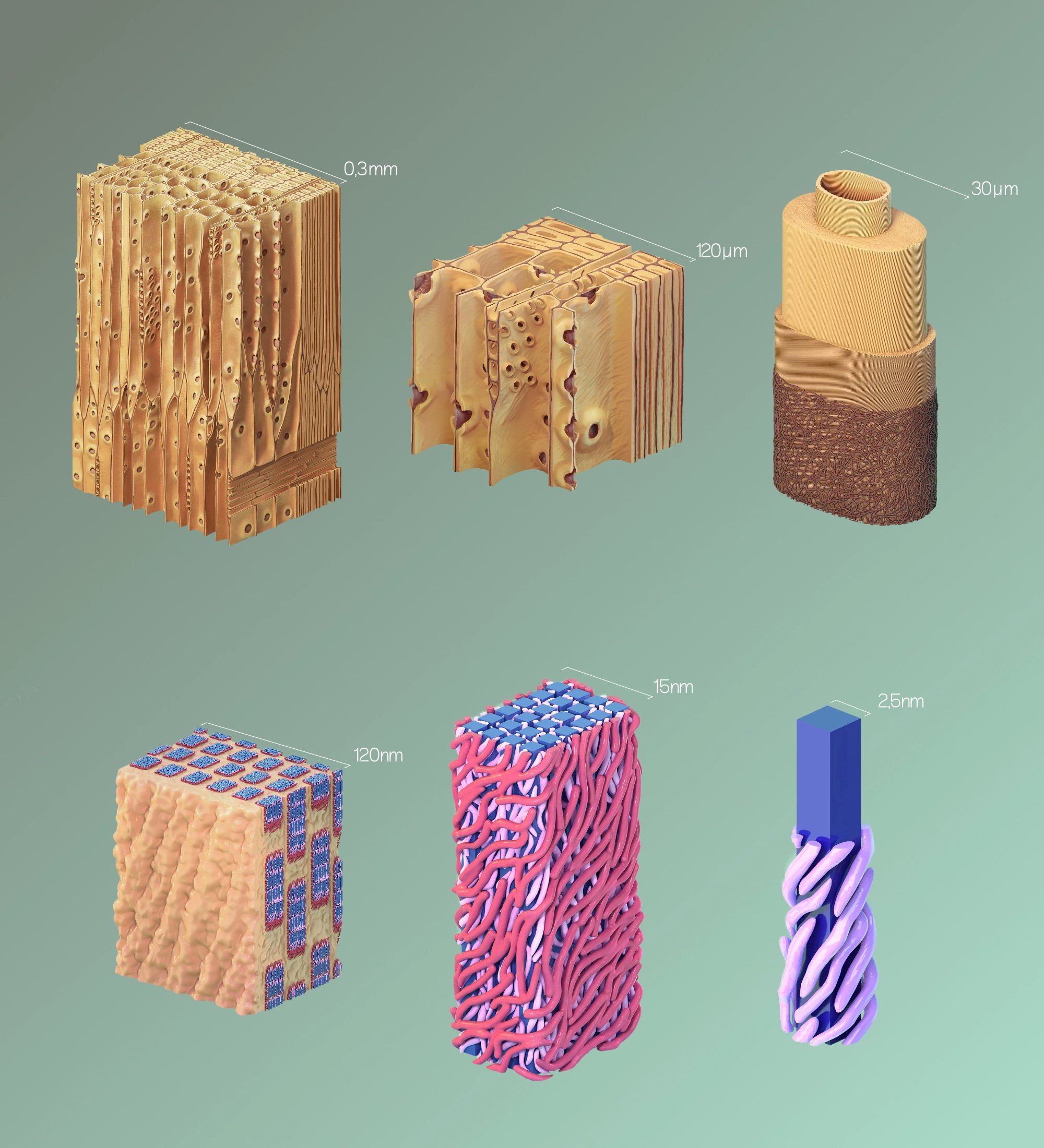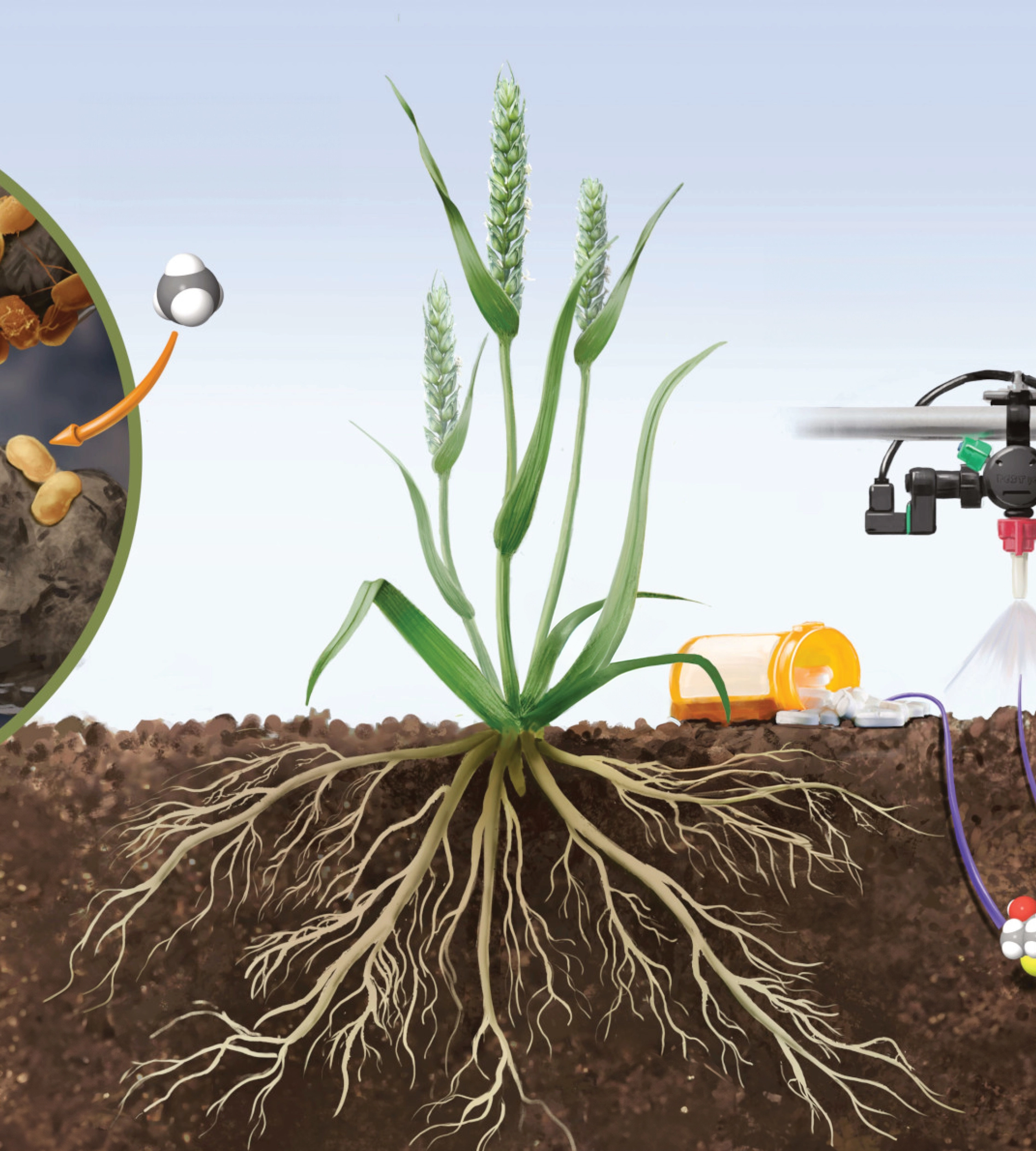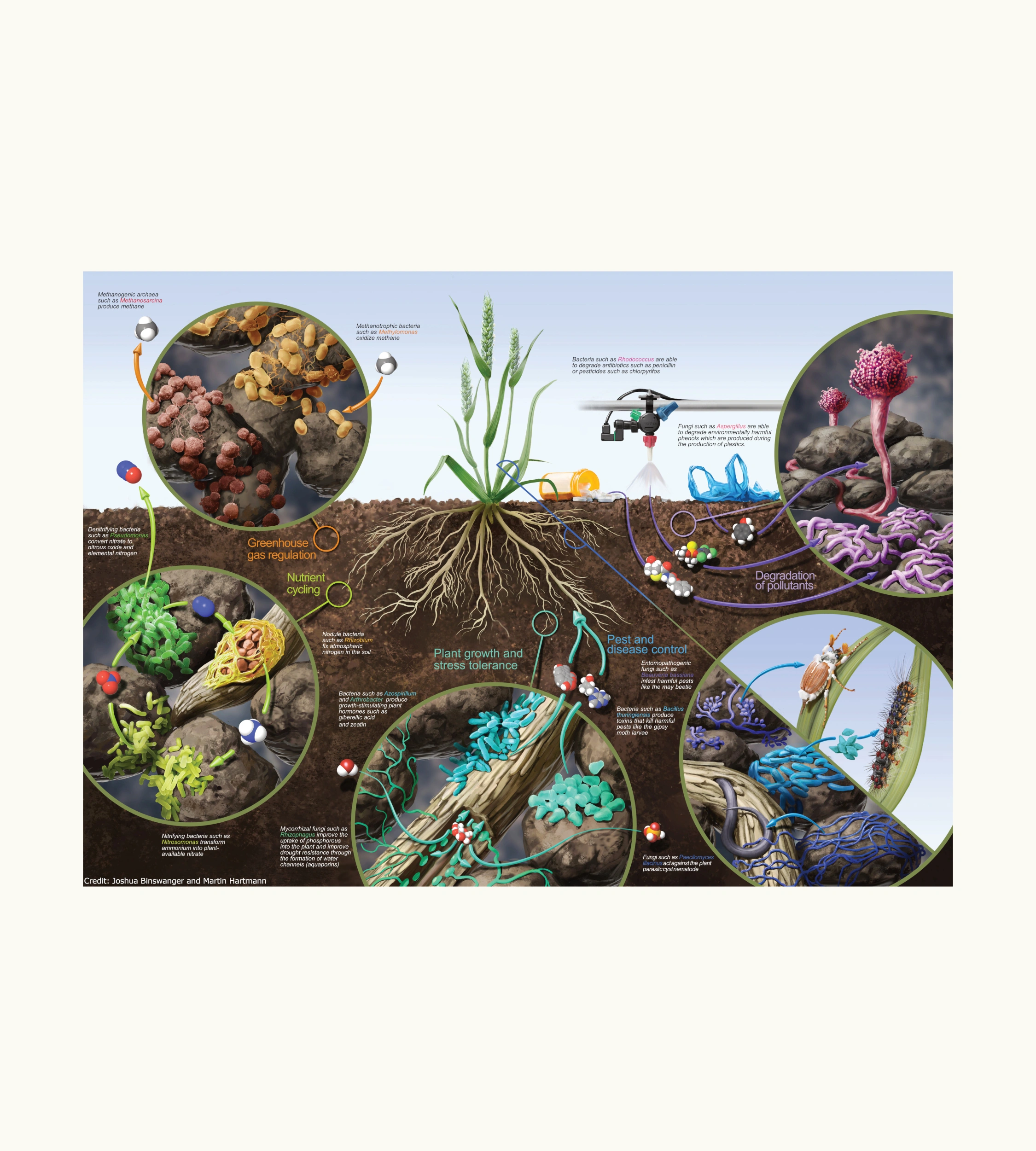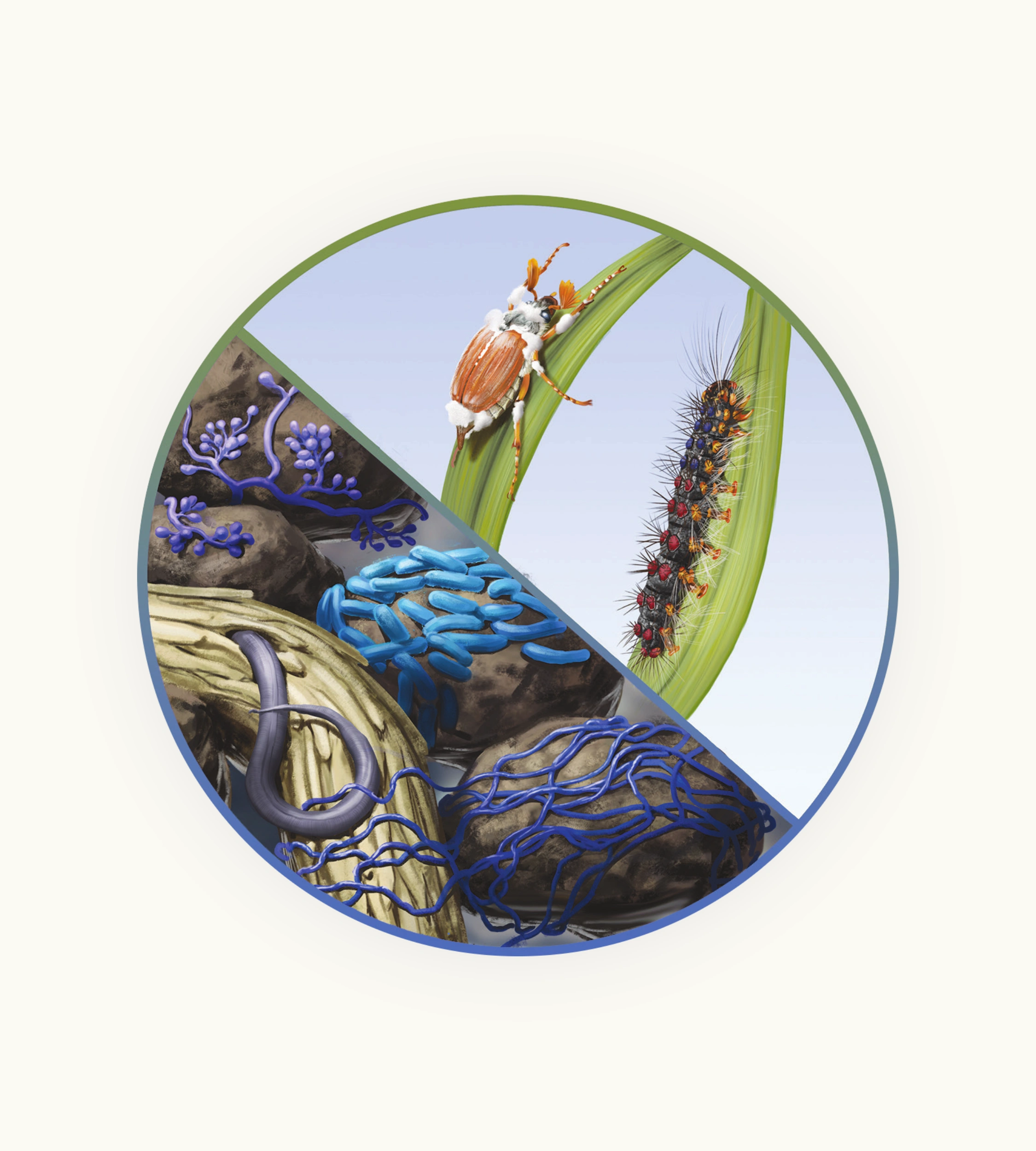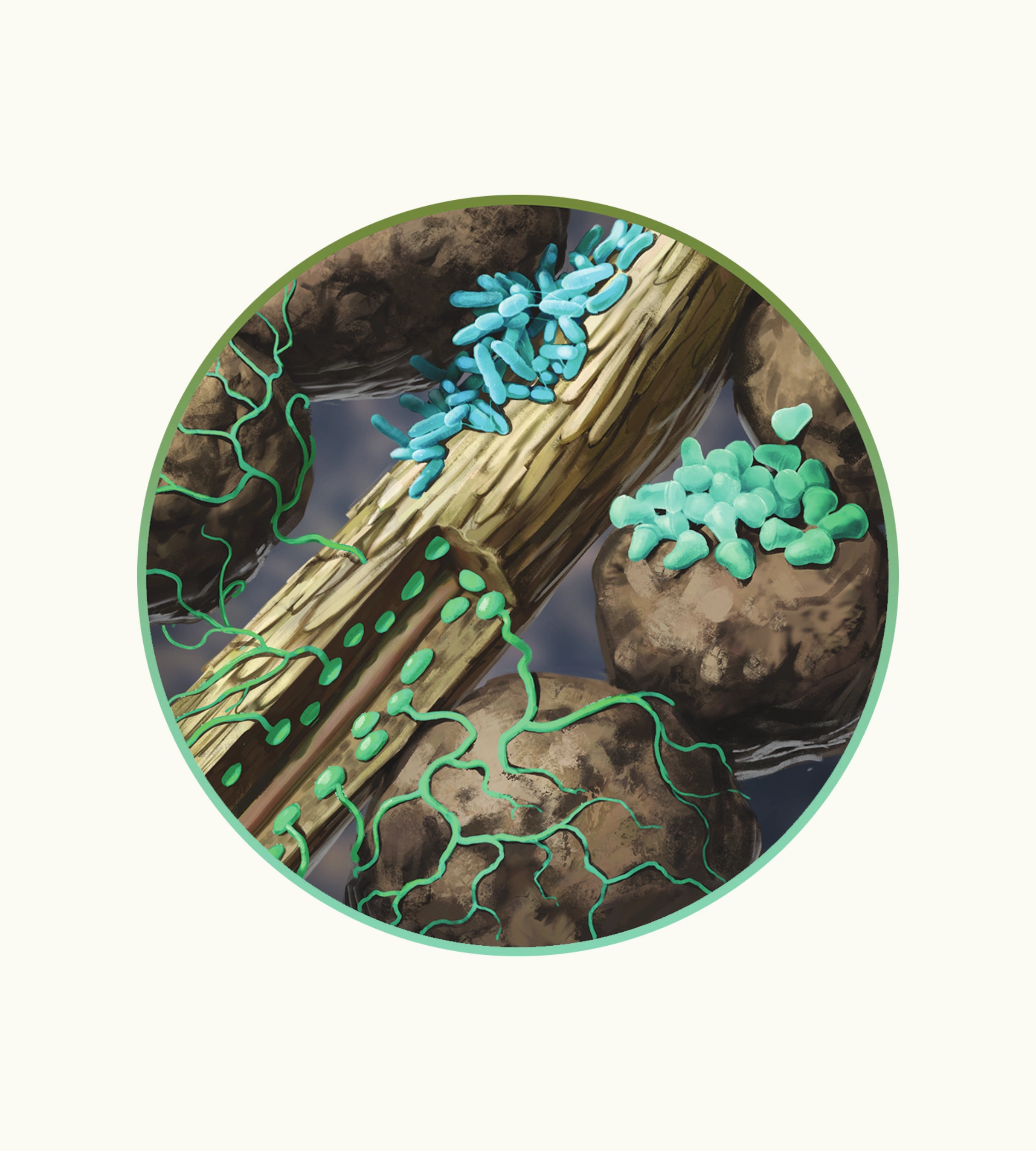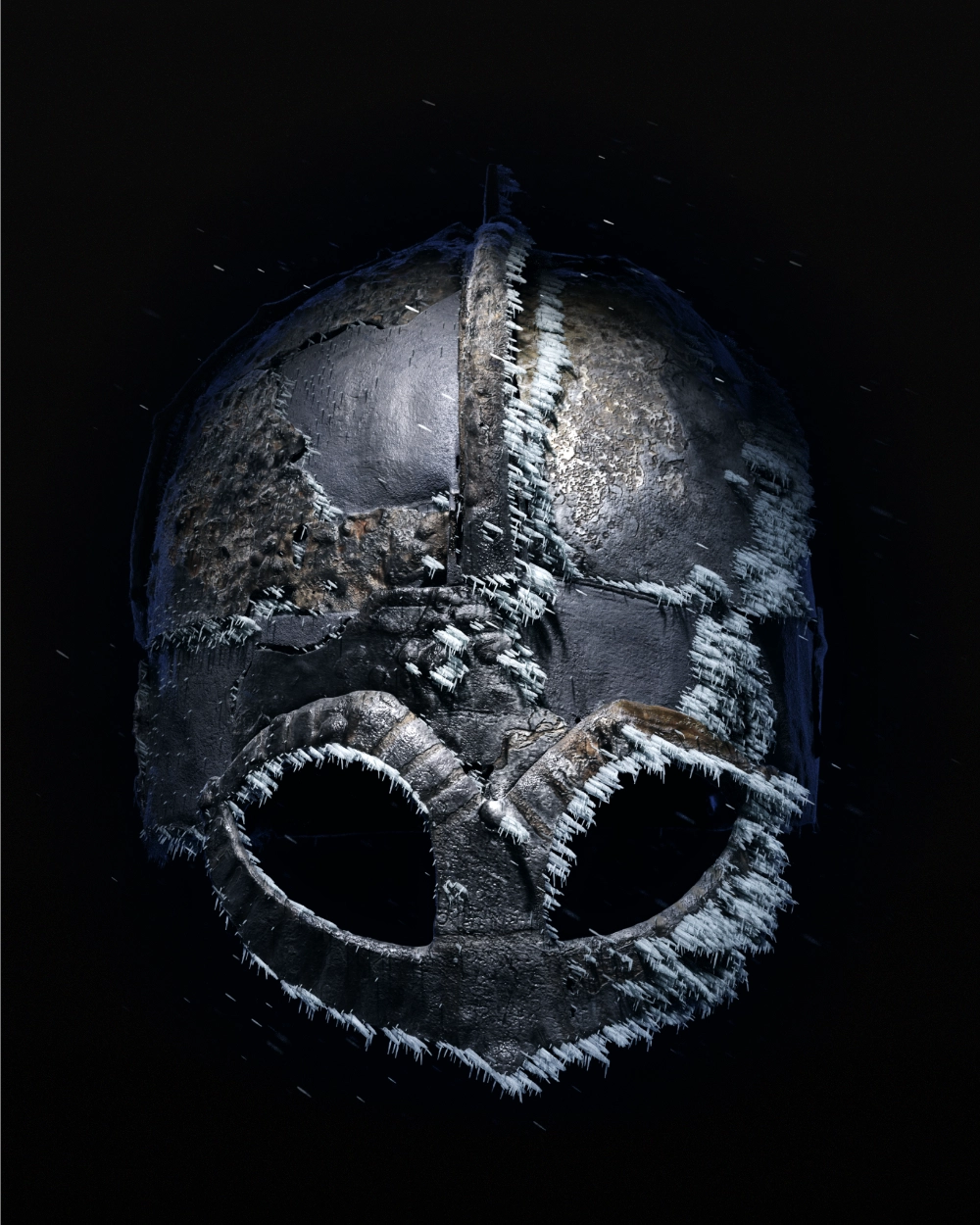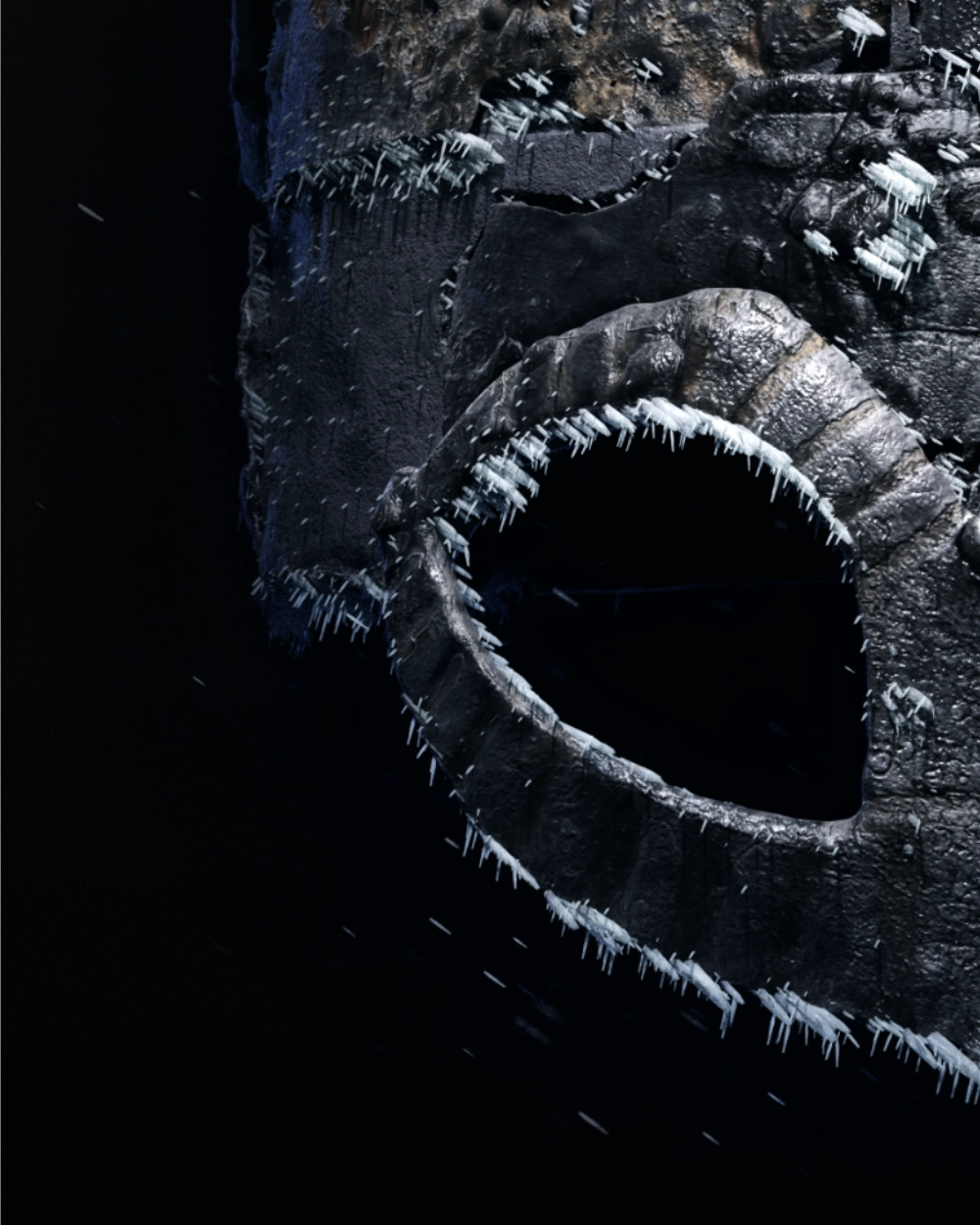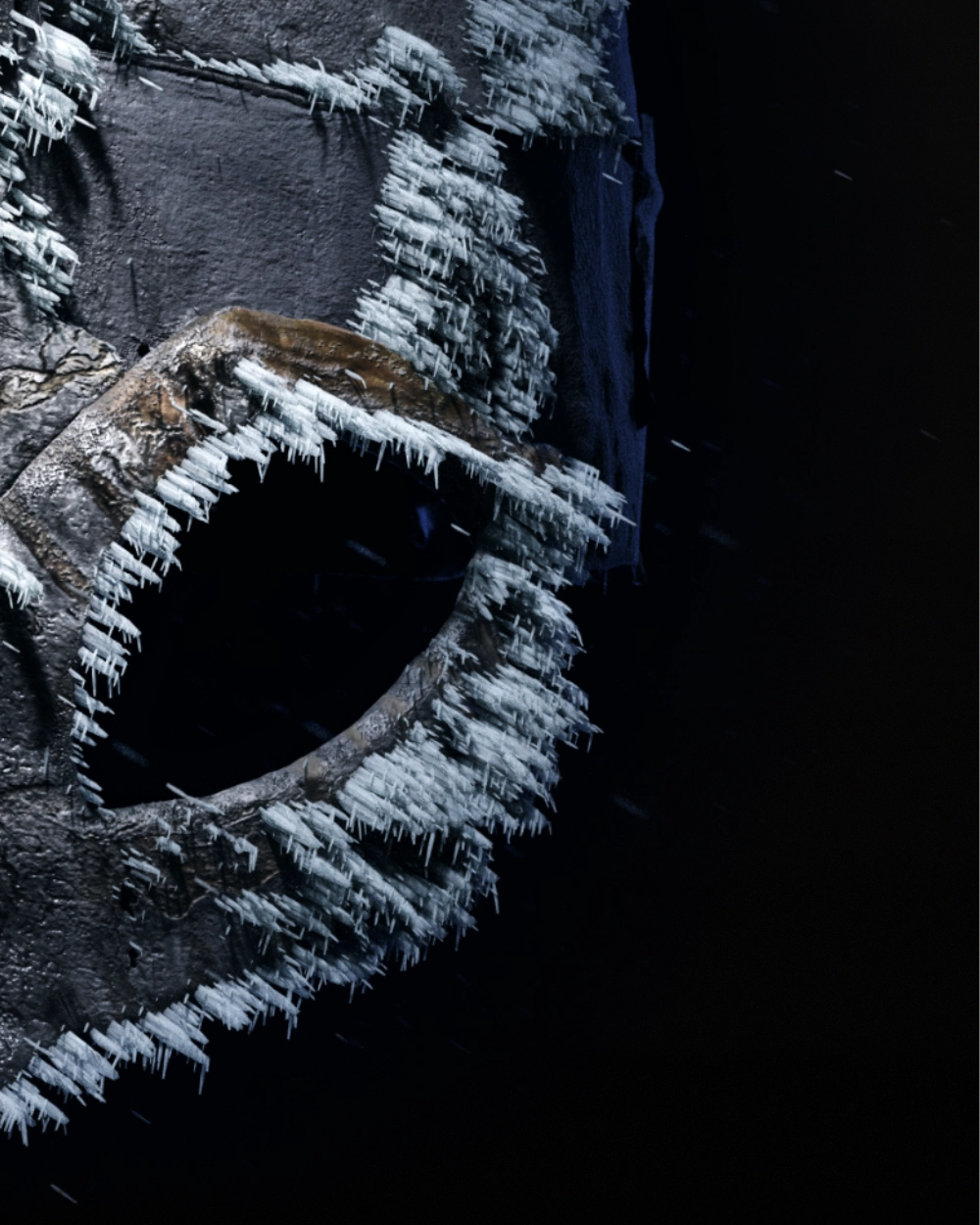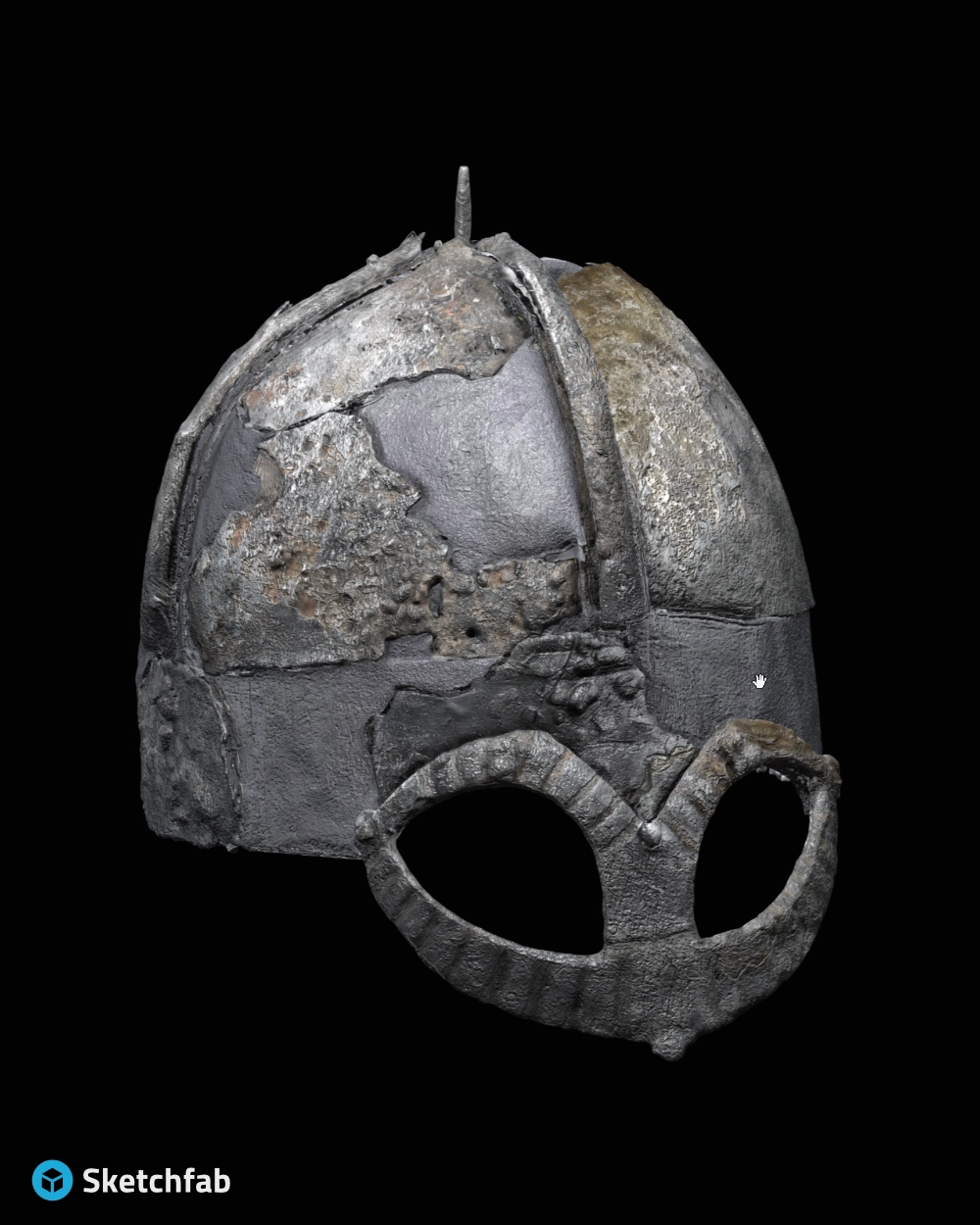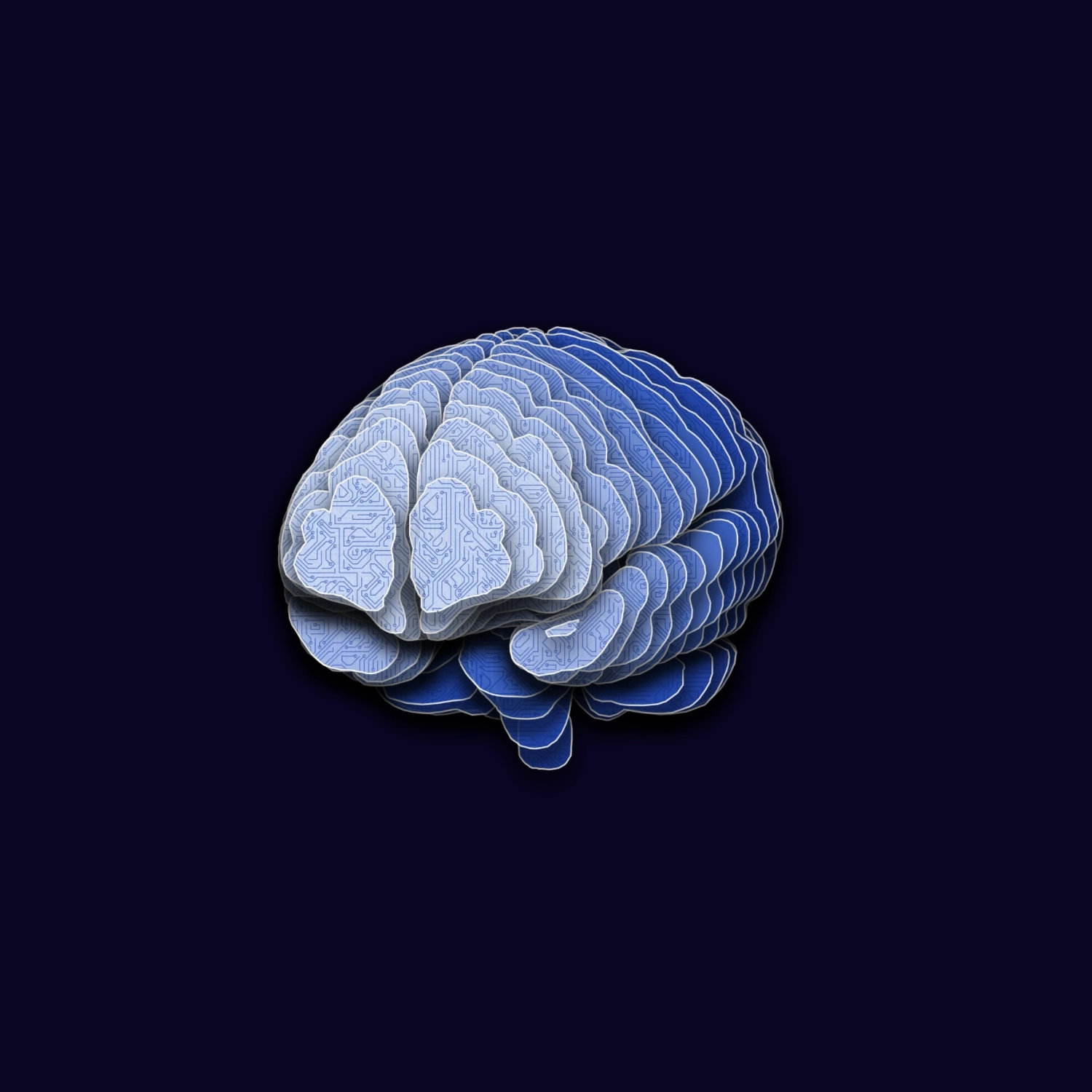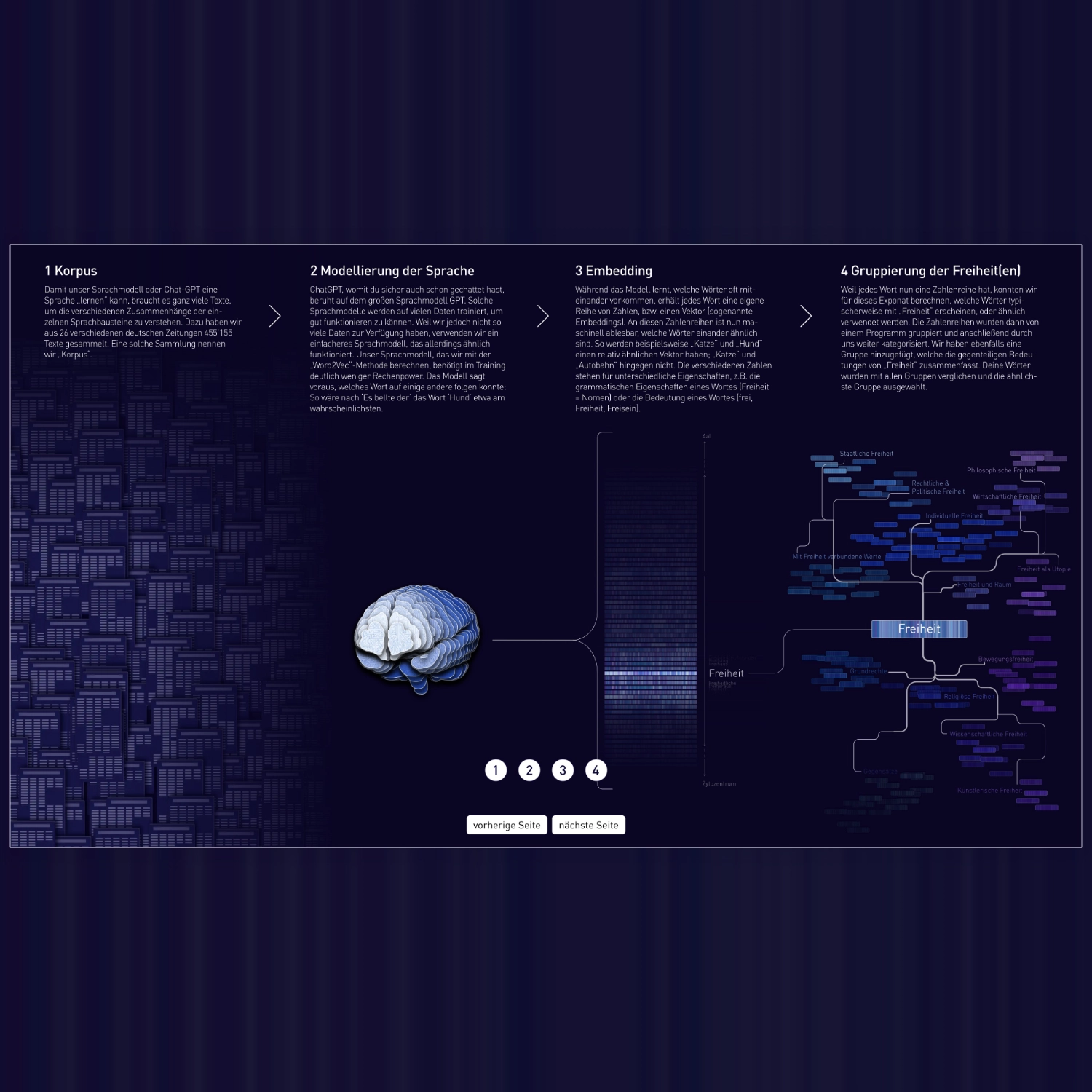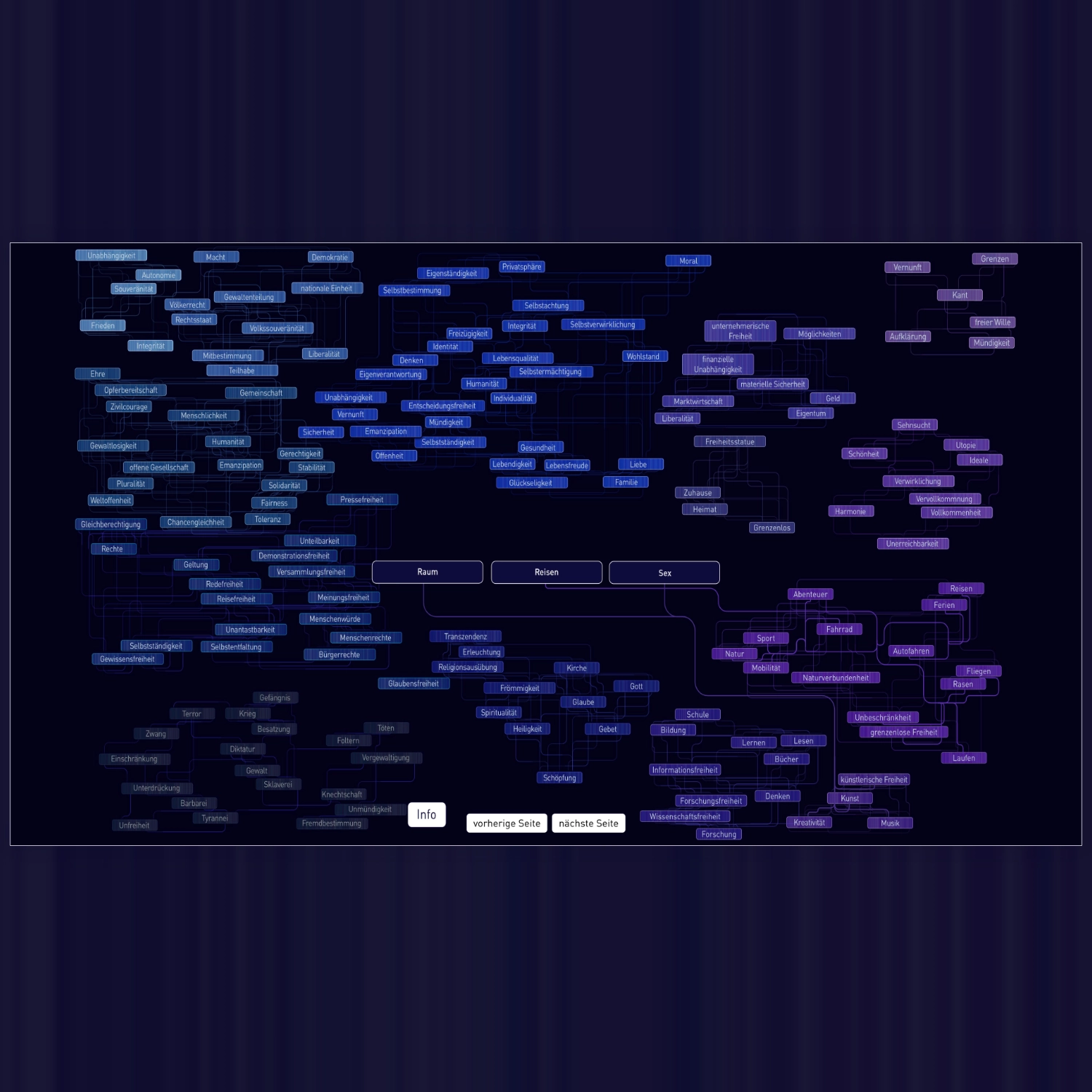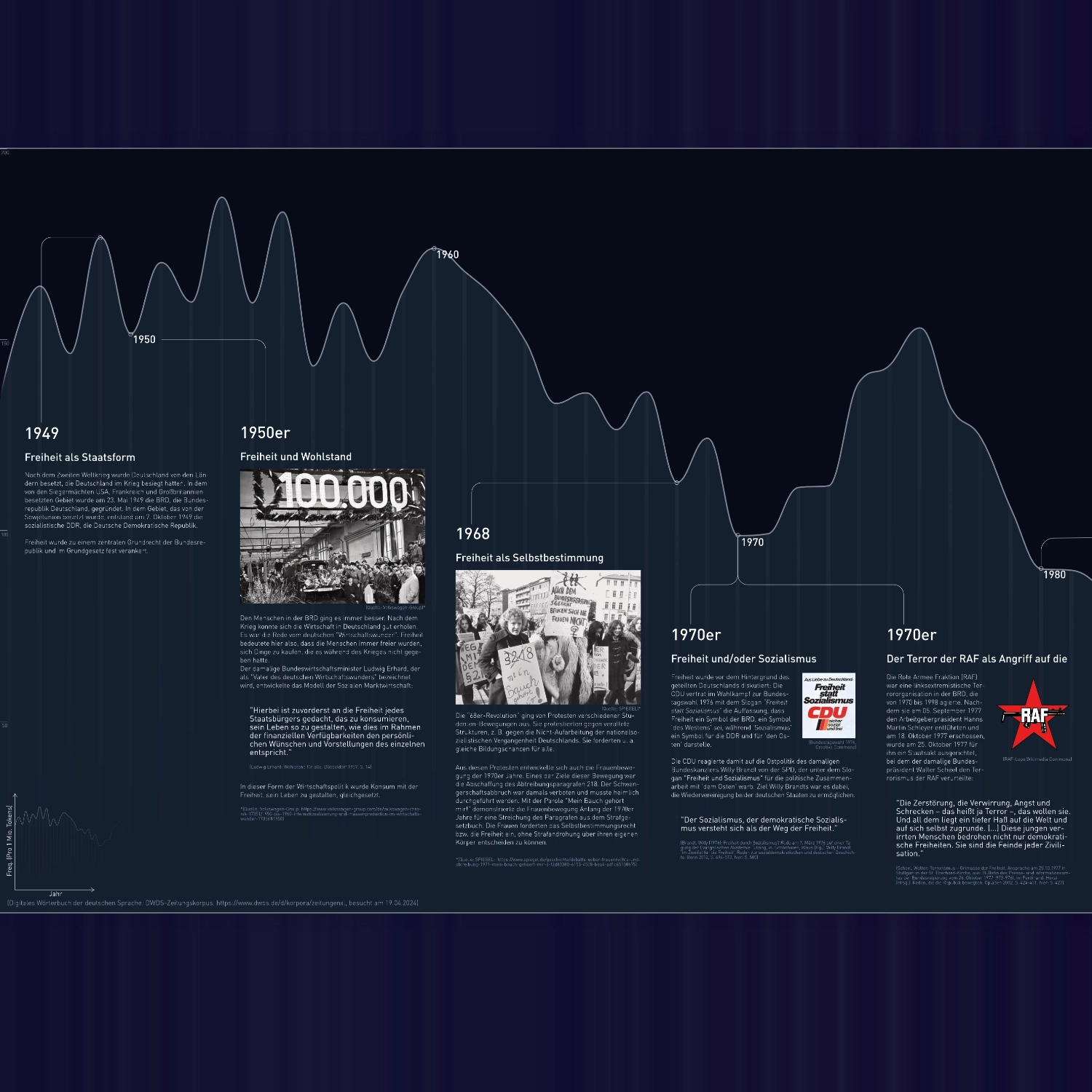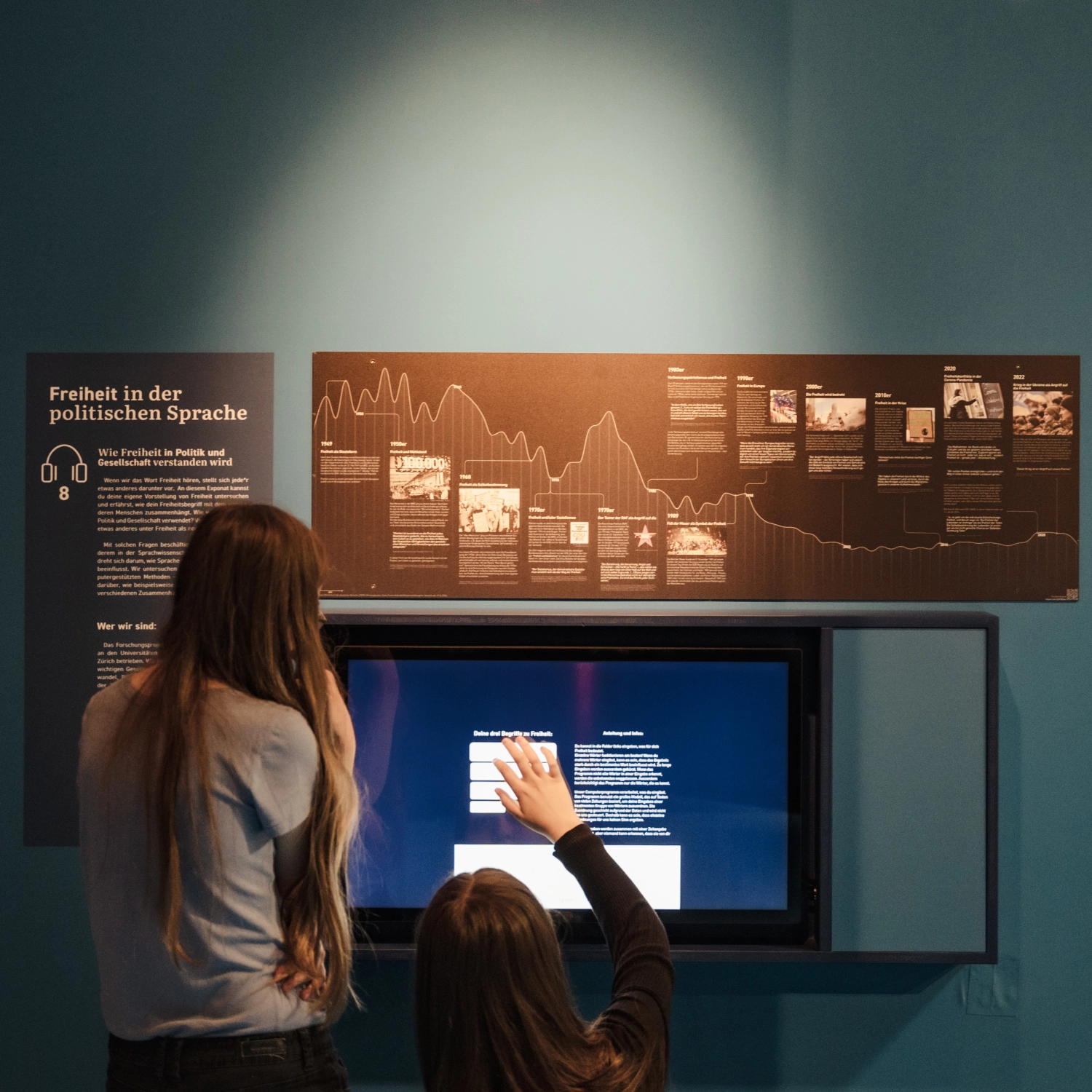CT scan rendering of oak wood (Quercus robur) ~300 microns (0.3mm)
Tool: Houdini, Rendering and custom import tool for image stacks
Xylopedia App on Ipad & Web
The Xylopedia App is available as a download on the AppStore or you can use the web version on xylopedia.de
Parenchyma Cells of Oak Wood visualized
Based on CT-Scans from Hereon @DESY, we created an idealized representation of all the Parenchyma cells in a block of aprox. 2mm x 3mm x 3mm
Segmentation of Parenchyma Cells of Oak Wood
For our Visualization we segemented all the Ray Cells by Hand in Slicer3D
Xylopedia is an app for explorative learning of micro-anatomical wood structures.
Students at the University for Sustainable Development in Eberswalde, Germany, now have the app to help them understand the complex anatomy of wood. Based on microCT scans from the Helmholtz Centre Hereon, we created novel 3D models for real-time exploration.
Visit Xylopedia
| Client: | HNE Eberswalde |
|---|---|
| Team: | S. Scherrer, J. Hammel, J. Lauströer, J. Stuhrmann, S. Lautner, M. Möhring |
| Tools: | Unity, Blender, Cinema 4D |
Xylopedia
3D Learning App
Living porous ceramics for bacteria-regulated gas sensing and carbon capture
arXiv:2409.00789 [cond-mat.mtrl-sci]
Three-dimensional printing of mycelium hydrogels into living complex materials
DOI: 10.1038/s41563-022-01429-5
3D Printed Objects with regenerative capabilities
The fungus materials enables parts to grow back together.
For papers and proposals by various research groups at the ETH, I have created illustrations showing the process of their experiments. Collaborating and accurately depicting these processes is always an interesting challenge and often creates an engaging dialogue between scientist and designer.
| Client: | ETH, Complex Materials |
|---|---|
| Tools: | Houdini, Blender, Adobe Suite, Affinity Suite |
Scientific Illustration ETH
Process Illustrations
Elevation-dependent advance of Alpine plant phenology
Examplary plant growth at higher altitudes in the swiss alps
Ultrasonic Plant Height Masurement Close Up
Ultrasonic plant height measurements from 32 automatic weather stations from 1500 to 2700 m.
Ultrasonic Plant Height Masurement
Ultrasonic plant height measurements from 32 automatic weather stations from 1500 to 2700 m.
Alpine Plant Phenology Monitoring tracks 25 years of data on climate change effects on Alpine vegetation. Using ultrasonic measurements, this study shows increased plant growth and earlier growing seasons at higher elevations, highlighting elevation-dependent warming impacts.
Michael Zehnder
| Client: | SLF, Michael Zehnder |
|---|---|
| Tools: | Houdini, Quixel Megascans, Blender, Affinity Suite, Photoshop |
| Citation: | Zehnder, M., Pfund, B., Alexander, J., Hille Ris Lambers, J., and Rixen, C.: Elevation-dependent advance of Alpine plant phenology, Abstract |
Phenological Shift
3D Learning App
N64 Controller
Proceduraly generated Key Visual in Houdini, Octane & Blender Link to Animation: https://www.instagram.com/p/C537QZXLEvf/?utm_source=ig_web_copy_link&igsh=MzRlODBiNWFlZA==
Visual Identity created for the Events Series "Game Design 101" at the MEEET Lab of the University of Zurich. With a porcedrual system in Houdini that lets you create a fully art-directable growth animation, making it possible to have high-end visuals for a series of events.
MEEET Lab
| Client: | MEEET Lab, University of Zurich |
|---|---|
| Tools: | Houdini, Octane, Blender, Davinci, Affinty Suite |
Game Design 101
Motion Graphics
Bark Beetles in Forestry: Ips typographus & Pityogenes chalcographus
The European Spruce Bark Beetle and Engraver Beetle are major pests in modern forestry, causing severe damage to spruce forests, especially with warming climates. Their impact underscores the need for effective forest management strategies.
Breeding Canal of European Spruce Bark Beelte
Illustration showing the breeding canal of the beetle.
Fir Tree (Picea abies)
The Picea abies is the tree suffering most, especially in the huge forest in eastern germany. Therefore a competent managment of the bark beetles is essentia.
Engraver Beelte ( Pityogenes chalcographus)
Poster showing the most important signs for spotting the engraver beetle.
The European Spruce Bark Beetle (Ips typographus) and the Engraver Beetle (Pityogenes chalcographus) are two of the most destructive pests in modern forestry. Their infestations cause extensive damage to spruce forests, particularly under warmer conditions that accelerate beetle populations. These outbreaks pose significant challenges for sustainable forest management and highlight the need for proactive pest control measures in the face of climate change.
To educate foresters the LWF contacted me to create large posters to be used for workshops.
Borkenkaefer.org
| Client: | Bayerischen Landesanstalt für Wald und Forstwirtschaft |
|---|---|
| Tools: | Adobe Photoshop, InDesgin, Illustrator |
Bark Beetles
Information Poster
Soft Wood Cell Structure: 300 microns
Fibre Cells showing the year ring, bordered pits and parenchyma cells
Simplified Cell Wall Structure: 30 microns
Soft Wood Fibre Cell Wall Structure showing the different angles the Fibres are aligned in multiple Layers
Cellulose Microfibril: 15 nanometer
Abstract illustration showing a possbile arrangement of cellulose (blue) and lignin (pink) molecules
Cellulose Microfibril Close Up
The lignin fibrils wrap around the cellulose fibrils, analogous to ferroconcrete
Wood Cell Structures
Different Structures and their real sizes; from year ring to cellulose molecule
Stability, lightness, and durability make wood a natural miracle material. But where do these properties come from? They are made possible by the fascinating structures within the wood, which are explored in these illustrations.
| Client: | ETH, Wood Materials Science |
|---|---|
| Tools: | ZBrush, Keyshot, Adobe Suite |
Structure of Wood
Visualisations & 3D Prints
Microbiome: Engines of the Earth
icrobial key functions in the plant-soil system. Soil microorganisms play essential roles in climate regulation, nutrient cycling, plant growth promotion and abiotic stress tolerance, pest and disease control, and pollutant degradation. Visit: www.microbiome.ch
Entomopathogenic fungi & Bacillus thuringiensis
Soil microorganisms help the plant defending against pests by eliminating pests directly or by enhancing systemic plant defense mechanisms.
Azospirillum, Arthrobacter & Rhizophagus
Soil microorganisms promote plant growth by producing growth-promoting hormones or by increasing the plant's tolerance to environmental stressors such as drought.
In partnership with the Sustainable Agroecosystems Group at ETH, we developed a visually captivating poster exploring the Soil Microbiome. Designed to balance scientific accuracy with visual appeal, this piece aims to make complex microbiological concepts accessible and engaging.
Guided by Martin Hartmann, the poster was crafted to resonate with a broad audience—from curious visitors at OLMA, where it was first showcased, to students at ETH.
For more in-depth information, please visit Hartmann’s page:
microbiome.ch
| Client: | ETH, Sustainable Agroecosystems |
|---|---|
| Team: | M. Hartmann, A. Hofmann, J. Schlaepfer-Miller |
| Tools: | Photoshop, Indesign |
Microbiome
Scientific Poster
Gjermundbu Helmet Close Up
Gjermundbu Helmet from c. 900s, with some extra frost details made in Houdini
Gjermundbu Helmet Close Up
Gjermundbu Helmet from c. 900s, with some extra frost details made in Houdini
For the Game Evening Events MEEET Lab I have the privilege to design Key Visuals. This is a Gjermundbu Helmet reconstruction based on Photos and 3D Scans.
Dating to the 10th century, the Helme helmet is a uniquely preserved Viking artifact of significant scientific importance for understanding early medieval warfare and society.
Sketchfab Model: Gjermundbu Helmet
| Based on this Scan: | Gjermundbu Helmet 3D Viewer |
|---|---|
| And these Photos: | Helmet @UNIMUS Portalen |
| Credit: | University Museum of Norway, Archeology, C27317/khjelm |
| Tools: | Houdini, Substance Painter, Photoshop |
Gjermundbu Helmet
3D Reconstruction
The Freiheit exhibit, part of the "Kontroverse Diskurse" project, was featured on the MS Wissenschaft in 2024, exploring the concept of freedom through political language.
Visitors contributed personal associations, which were analyzed alongside data from 500,000 texts to showcase diverse interpretations of freedom.
I was responsible for the visual design of the exhibit, creating an engaging and accessible interface to connect visitors with the research.
Visit the Desktop Version: Freiheit
| Developers: | Sonja Huber, Davide Ventre (Results Visualisation) |
|---|---|
| Project Coordinator: | Prof. Noah Bubenhofer, Davide Ventre |
| Tools: | Rive, Affinity Suite |
